All the Details About the New Omega Speedmaster Moonwatch Professional Master Chronometer (Live Pics)
And how it compares with the older reference.
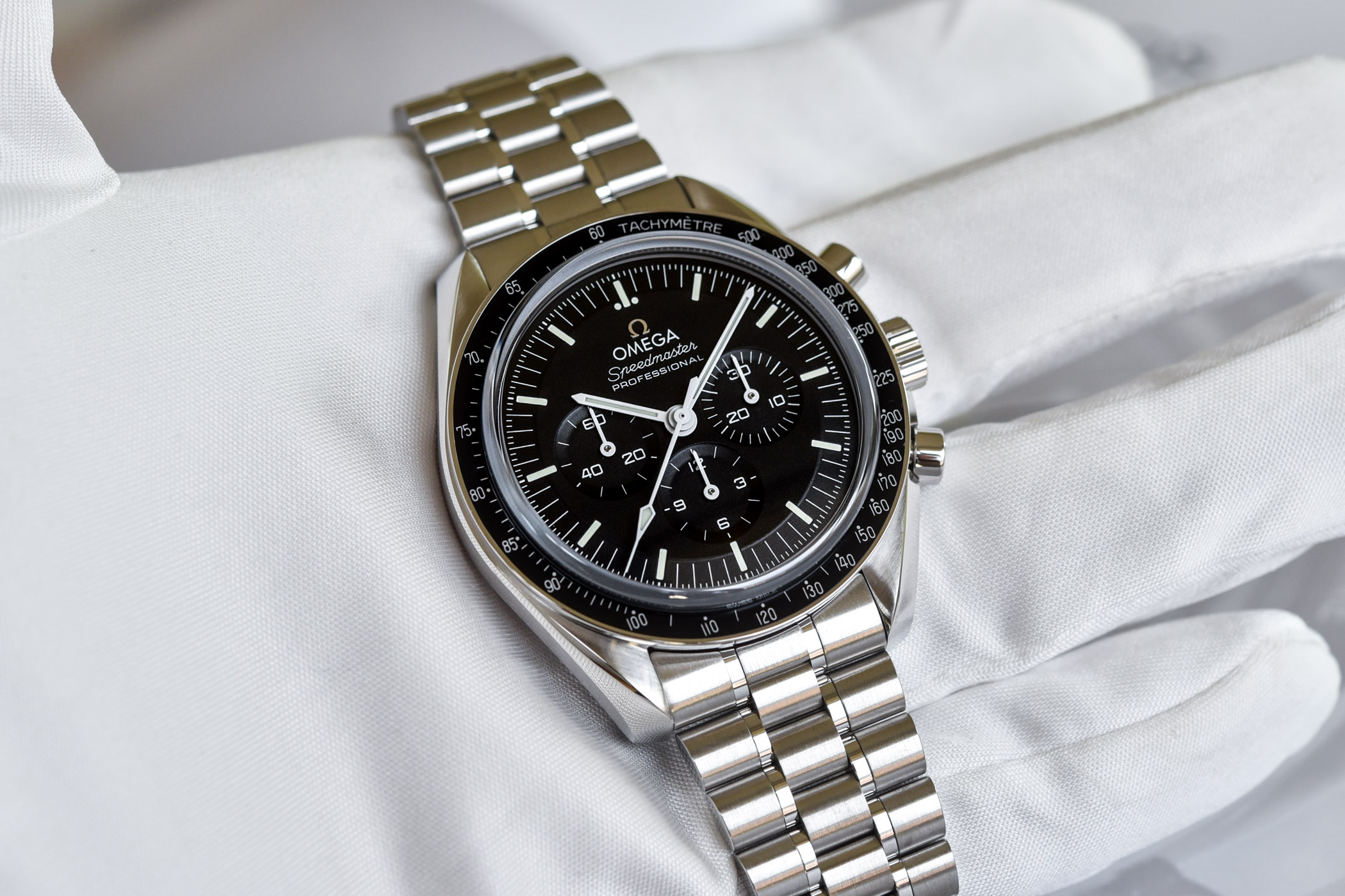
This probably won’t come as a surprise to you but… there’s a new regular production Speedmaster Moonwatch Professional! As far as I can say, this is big news, simply because we’re talking about one of the most iconic and most respected watches ever produced, and a watch that has been in continuous production since 1957. Clearly, Omega wasn’t allowed to mess with this watch and everything that had to be changed, removed, redesigned or updated had to be carefully weighed. We covered the launch of the watch a couple of days ago; however, such an update needed to be explained once we had the opportunity to see the watch. Why? Because actually, almost every single element of this Omega Speedmaster Moonwatch Professional Master Chronometer is new… But (thankfully) it still very much looks like a Moonwatch.
The Speedmaster Moonwatch Professional… until now
Before we look at the new Speedmaster Moonwatch Professional Master Chronometer, it is important to refresh our memory. Because the new reference looks almost identical at first sight, but since almost everything is new, even for us, it was important to take the time to look at an older Speedmaster Moonwatch Professional in details. So first of all, let’s start by exploring the older, pre-2021 reference 311.30.42.30.01.005 (also known as 3570.50 with the older nomenclature), with its 42mm asymmetrical steel case, Hesalite crystal, hand-wound calibre 1861 – and a fair amount of dust and scratches, being my personal, used and abused watch (which I bought new in 2012).
Although it was born in 1957, under the reference CK2915, the Speedmaster as we know it today, the so-called “Professional,” came on the market in 1964 under the reference ST 105.012. The “Professional” mention appears together with the implementation of the new asymmetrical case, with its lyre-type twisted lugs and protection for the crown and pushers – with a diameter that coincidentally grew from 39.7mm to 42mm, albeit with a slightly smaller lug-to-lug measurement. This shape remains practically unchanged since 1964 and it is what we still find in the pre-2021 Speedmaster Moonwatch Professional.
The Speedmaster as we know it today, with the reference 3570.50, has been in the collection since 1996 when Omega launched the calibre 1861, an evolution of the 861 that appeared in 1968. Except for the change from tritium to Super-LumiNova, a new presentation box and small updates on the bracelet, nothing has changed in well over 20 years of production.
The 42mm stainless steel case mostly features brushed surfaces, with a polished bevel running on the side. Also available with a “sapphire sandwich” construction, the classic model features a synthetic Hesalite crystal (with the small Ω logo in the centre).
The bezel insert of the pre-2021 Speedmaster Moonwatch Professional 3570.50 is made of black anodized aluminium. For the rest of the story, we must note two important features: the “dot next to 90” and “dot beneath 70″… You’ll understand later, but these are features that appeared only on more modern references and were absent from the 105.012. The bezel is of course, external, framing the crystal and is made of polished stainless steel.
As for the dial, the pre-2021 Speedmaster Moonwatch Professional has a matte black, slightly grained texture with recessed sub-counters featuring a snailed pattern in the centre, but not on their flange. The dial is a so-called flat dial, in opposition to the step dials that were found until 1975 on vintage Speedies. The “flat” mention isn’t entirely true though, since the dial has an angled periphery with long markers for the seconds/minutes, short luminous hour markers (they don’t cross into the minuterie) and a chronograph track with 5 divisions per second – which doesn’t make sense with a 3Hz movement… The hour and minute hands are straight batons painted in white, while the second hand has a so-called diamond tip (which is quite small and rather close from the centre of the dial) and a flat counterweight, which appeared in 1968.
The printing at 12 is showing a triangular arrangement, with the wide Ω logo on top, followed by the name of the brand, the “Speedmaster” mention with a short and wide S and finally, a larger “Professional” mention with tall font.
As for the bracelet (not shown here), the ref. 3750.50 was equipped with a brushed band with polished inter-links – reference 1998/849. Measuring 20mm at the lugs and 18mm at the buckle, it was equipped with a rounded brushed clasp (with safety pushers) and engraved with the same mentions as found at 12 o’clock on the dial (logo, brand, Speedmaster, Professional). On later models, the adjustment pins were replaced by screws. And even though of impeccable execution and comfort, it started to look slightly outdated – at least in my books.
As for the classic Hesalite model, the caseback was plain stainless steel. The sapphire sandwich model came with a see-through back offering a view of a slightly better finished (Geneva stripes and bevelling) calibre 1863. The steel back features a central seahorse embossed logo and the two iconic mentions “FLIGHT-QUALIFIED BY NASA FOR ALL MANNED SPACE MISSIONS” as well as “THE FIRST WATCH WORN ON THE MOON”.
The mechanics in the Speedmaster Moonwatch Professional 3750.50 are, to say the least, tried-and-tested. Inside is the venerable calibre 1861, which appeared inside the watch back in 1996. However, keep in mind that this is an evolution of the calibre 861 that appeared in 1968… It was certainly time for Omega to bring more modern technologies in this watch. After more than 50 years of loyal services, and even though I still enjoy the calibre 1861 in my own Speedy, Omega had to improve it with its latest technologies. This calibre is a cam-operated chronograph (Lemania-based) with a horizontal clutch, a synthetic Delrin brake, 18 jewels and a standard Swiss lever escapement. It was also one of the rare Omega watches not to be chronometer-certified. It runs at 3Hz and boasts about 48 hours of power reserve.
Everything about the new Speedmaster Moonwatch Professional Master Chronometer
First of all, let’s have the short answer to the important question regarding this new Speedmaster Moonwatch Professional: what has changed? Basically, everything. We were, of course, expecting a mechanical update, with Omega replacing the venerable Calibre 1861 by the far more modern Calibre 3861. However, instead of changing just that and a couple of other minor things, the brand decided that most parts of the watch – and that includes the case, the bezel, the pushers, the crown, the dial, the hands, the caseback, the bracelet and the clasp – needed to be updated too. Are we talking about major changes? Certainly not, as Omega has worked on details only, and the new Speedmaster still looks like a Speedmaster – thankfully. See below, the pre-2021 ref. 3750.50 on the left, and the new Speedmaster Moonwatch Professional Master Chronometer on the right:
So, what Omega has done with the new 2021 Speedmaster Moonwatch Professional? Still a short answer, the brand has given its best-seller model a slight vintage touch, to make it look closer to the earliest “Professional” model, the reference ST 105.012. But to understand that, we need to go deep into the details, so fasten your seatbelts: here is the new Speedy in all its glory.
Case, proportions, dimensions
Let’s first start with the case. To begin with, the shape is, as you would expect, respectful of the signature design introduced by the ST 105.012, the so-called Professional case with its asymmetrical design, short twisted lugs, protective shoulders for the crown and pushers and mix of brushed surfaces – angled inside the lugs, horizontal on the casebands – and polished accents – the bevel running from a lug to another. Nothing new in that, admittedly.
In terms of proportions, the diameter of the watch is still at 42mm – identical to all models since 1964 – however, and despite the new movement that we could have expected to be thicker, the Speedmaster Moonwatch Professional Master Chronometer appears to be thinner than the past ref. 3750.50… and by quite a margin. And this is true for both the Hesalite model, which now 13.6mm vs. 14.3mm in the past, and the “sapphire sandwich” version that is even thinner, being 13.2mm now versus 13.7mm in the past. This 0.5mm to 0.7mm less in height and can’t be considered a detail. This changes quite significantly the perception of the watch on the wrist. Also, the lug-to-lug measurement has been slightly reduced, being now 47.46mm (vs. circa 48mm in the past).
Are there new features to be noticed? Well, it seems that the case has been slightly “reshaped” and is the same that what’s used in the Silver Snoopy Award 50th anniversary. The main difference is a slightly thinner polished bevel with the brushed band being larger than before (on the pushers’ side) and lug tips than appears a bit more angled. Also, the pushers (a bit shorter) and crown are different on this model than they used to be in the past. The latter is wider, which should help to wind the watch. We’re still talking minimal updates, though.
Other than that, we find an impeccable execution, with clearly defined surfaces and the usual feeling of solidity. A closer inspection could even reveal an overall finishing that is even cleaner than in the past, by a small but pleasant margin. The water-resistance is still rated at 50 meters and the crown doesn’t screw down.
“DON” Bezel
One of the major updates on this new Speedmaster Moonwatch Professional Master Chronometer is the bezel. First of all, while we could have expected the insert to be made of black polished ceramic with white enamel scale, Omega retains the classic black anodized aluminium insert. A good point in my opinion, as ceramic (even if virtually scratch-proof) often appears too glossy for such an instrument-like watch. Aluminium is not only great looking, but it is also respectful of the original Professional watch.
If the material doesn’t evolve, the style of the bezel’s insert itself does change, to come back to the original layout found in the 1960s. It means two things, a “dot over 90” (a.k.a DON) and a “dot diagonal to 70”. For those who aren’t familiar with such details, this refers to pre-1970 models. There have also been “dot close to 70” and “dot beneath 70” versions after that, which were combined with “dot next to 90” (as we’ve seen in the introduction). All of that has been made to bring back the flair of the vintage ST 105.012 model. Small details (insignificant for some maybe) that seasoned collectors will appreciate. One thing to be noted, the font of the tachymeter scale appears a bit crispier, sharper and thinner than in the previous reference 3750.50. Yet, it retains the accent over “tachymètre” (written in French) and the base-500 calculation.
Still the Sapphire or Hesalite options
While for the moment we’ve been talking about the Speedmaster Moonwatch Professional Master Chronometer, there are actually two models to choose from. For years, Omega has offered two variants of the Moonwatch Professional in its catalogue. One equipped with period-correct synthetic Hesalite crystal and solid steel caseback. The other one with a so-called “sapphire sandwich” construction, meaning that both front and caseback were protected by a sapphire crystal. This also implied that the latter was equipped with the calibre 1863, a better-finished version of the calibre 1861 that was found inside the Hesalite model. Other than that, both watches were fully identical.
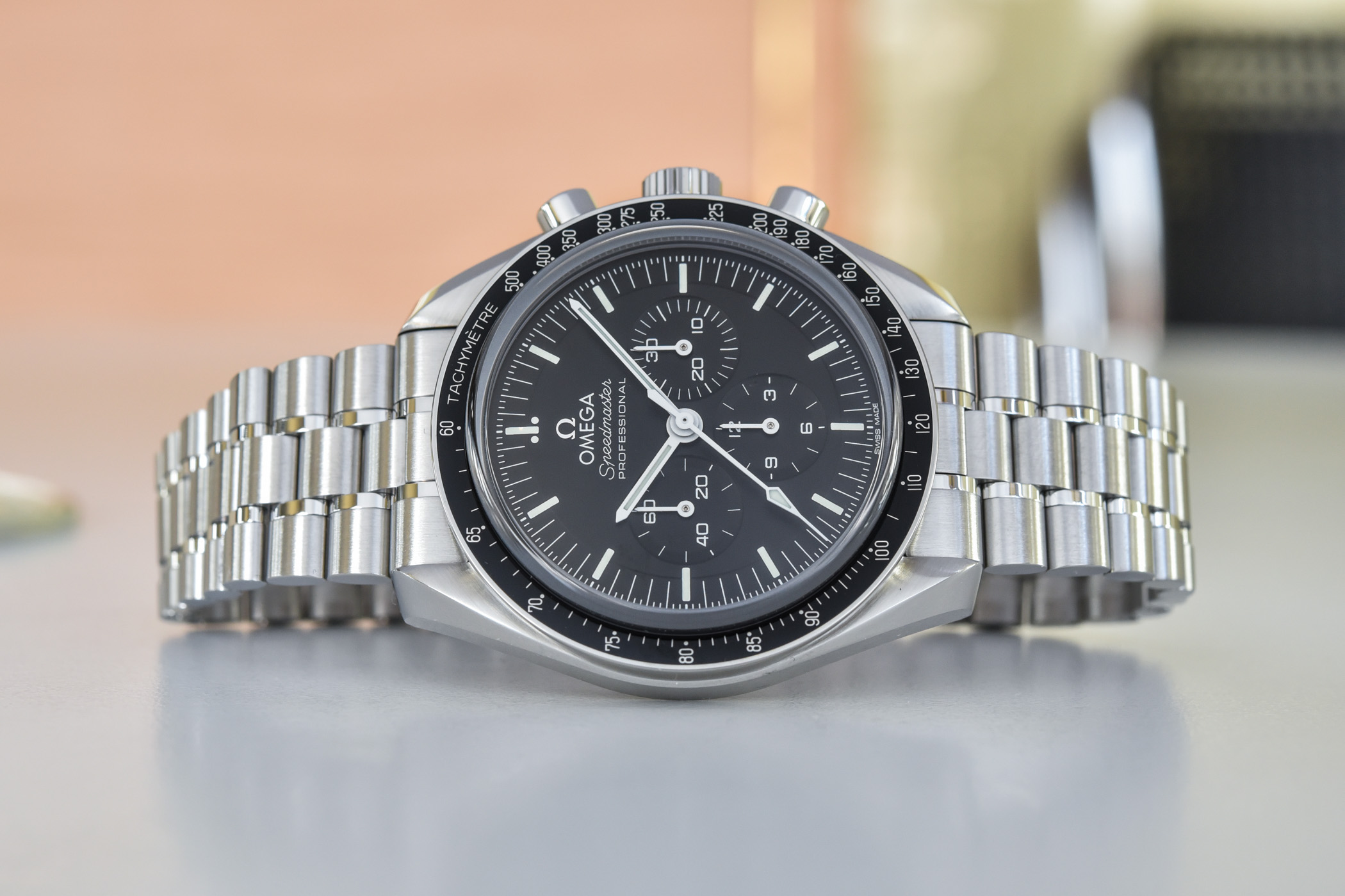

For the new generation Speedmaster Professional, Omega still offer the choice between Hesalite and sapphire sandwich models. However, there are more differences between these two models than in the past. For instance, the Hesalite version has a fully brushed bracelet and a printed Ω logo on its dial, in addition to a solid steel caseback. The sapphire model, on the other hand, has a brushed bracelet with polished inter-links and an applied, diamond-polished Ω logo on its dial. Of course, the caseback is sapphire too, so you’ll have a view on the new co-axial movement.
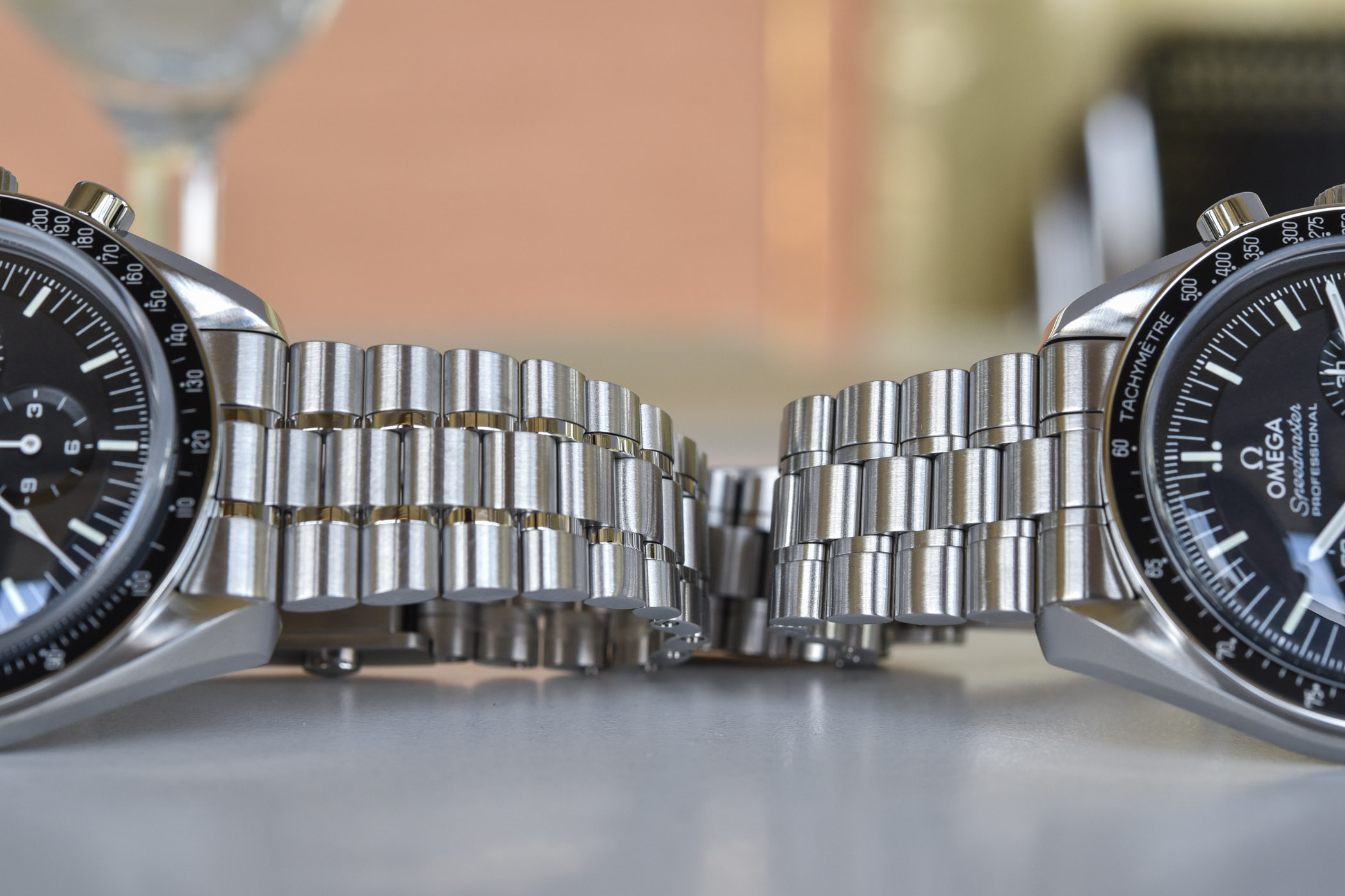
One differentiation that isn’t true anymore is about movement decoration. While the Hesalite model used to be less “finished”, both versions of the Speedmaster Moonwatch Professional now have the same movement, the Calibre 3861, which is finished with Geneva stripes and bevelled edges in both cases.
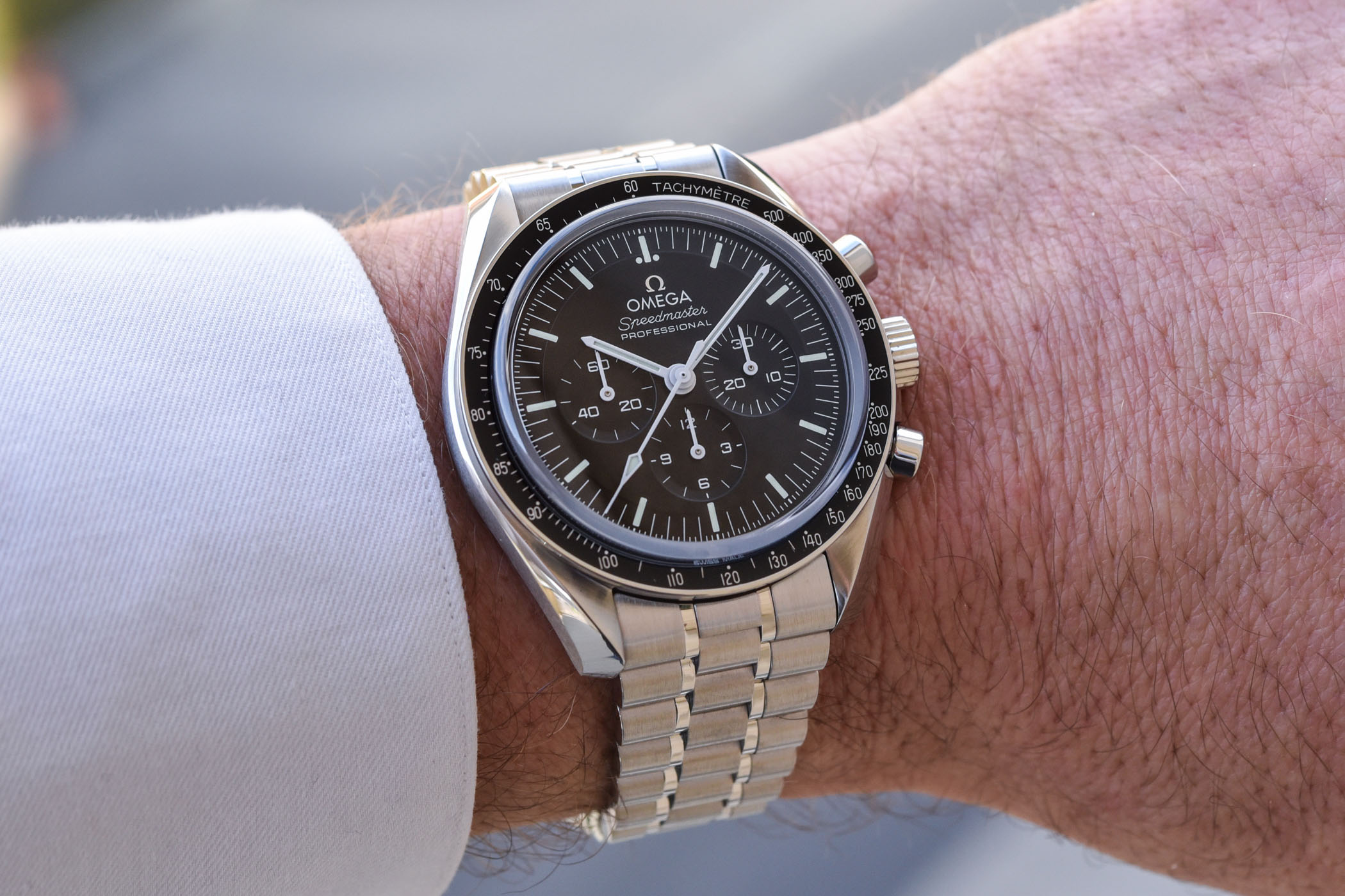
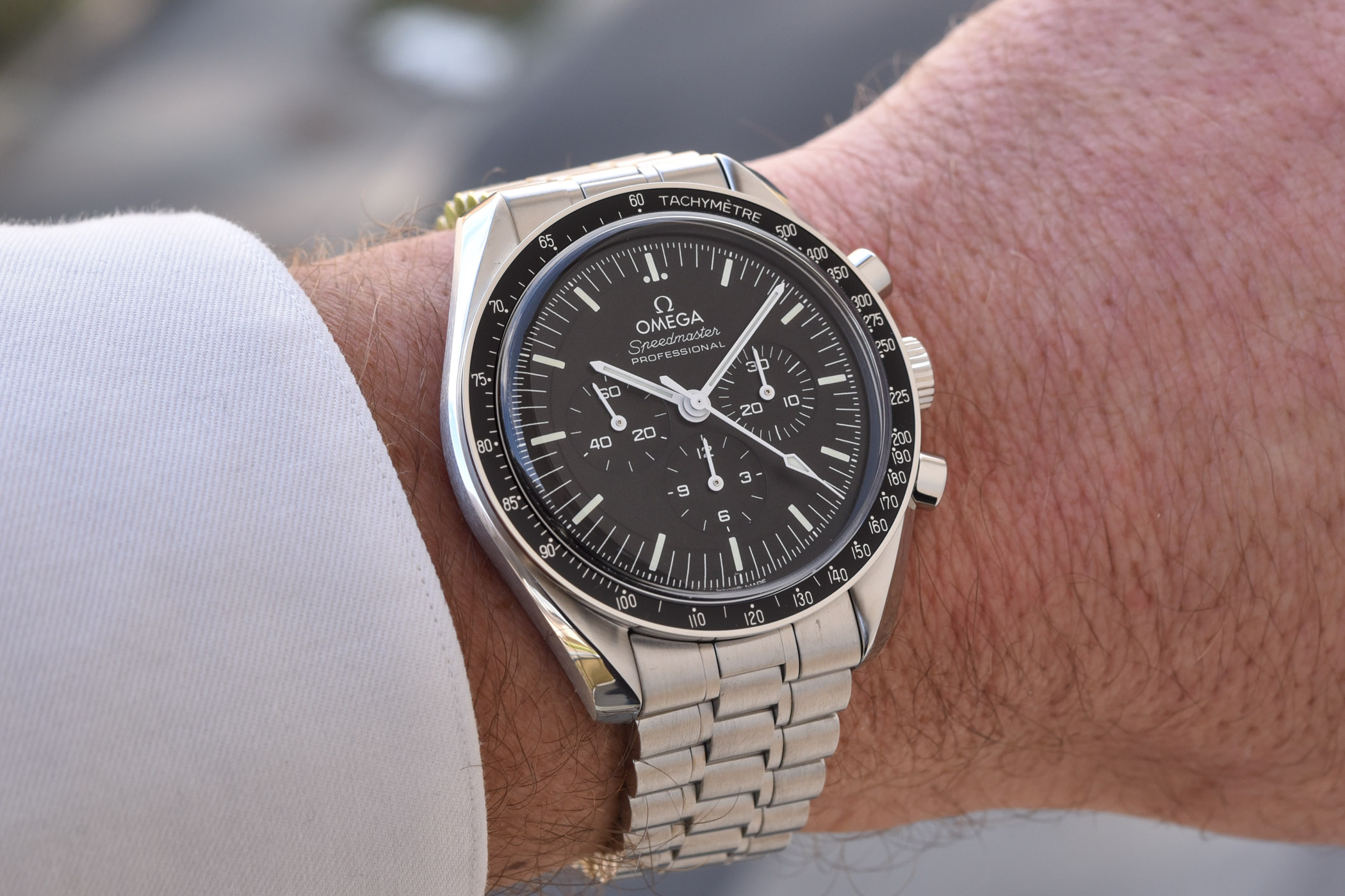
Which one to choose…? I’d say that in the past the Hesalite model was a bit more attractive. But with the addition of an applied logo and knowing the actual beauty of the Calibre 3861, the sapphire sandwich model has grown on me. Now, the decision will mostly have to do with historical accuracy. I’d say that for a first Speedmaster, the Hesalite remains a serious option but the sapphire wins when it comes to daily practicality – specifically since this new model is noticeably thinner with sapphire now. The EUR 800 difference between the two versions is also to be considered.
New Caseback
As said, almost everything has been updated in this new Speedmaster Moonwatch Professional and that also includes the caseback. Usually with a single step, the new generation Speedmaster once again looks at the past and brings a double-step caseback that is in line with the 105.012. This is true for both the solid steel one found on the Hesalite model or the back of the sapphire version.
Looking at the back of the watch, you’ll notice multiple tweaks. The under-lug surfaces are now brushed instead of polished, the globe logo sits under the 2 o’clock lug (previously on the side of the caseback) and a stainless steel mention is visible under the 4 o’clock lug. More importantly, the engravings have changed.
The solid back of the Hesalite model retains the central embossed seahorse logo and the classic “THE FIRST WATCH WORN ON THE MOON” mention. However, the rest now reads “FLIGHT-QUALIFIED BY NASA IN 1965 FOR ALL MANNED SPACE MISSIONS” and that is new. Also, the second step of the caseback is engraved with “Co-Axial Master Chronometer” and “Professional Moonwatch”.
For the sapphire sandwich version, the mention “THE FIRST WATCH WORN ON THE MOON” is retained but not the flight-qualified mention… Details for sure, but I liked this mention.
Back to the step Dial
One of the key features of early Speedmaster watches – from 1960 to 1974 – was the presence of a “step dial”, with the peripheral chapter ring being slightly recessed. As of 1974 and until 2020, all the dials of the Speedmaster Professional watches were so-called “flat dial” where the chapter ring was angled and not embossed with a step. Again, with the idea to bring some of the ST105.012 style, the dial of the new Speedmaster Moonwatch Professional Master Chronometer goes back to a step profile – quite an evolution after 46 years of flat dials.
Let’s start with what remains unchanged. First of all, the dial is still embossed brass and still has its matte black, slightly grained texture that provides great contrast. The sub-counters are still recessed and the central part still has a fine concentric pattern. The display remains the same, with a tri-counter layout – small seconds at 9 o’clock, 30-minute counter at 3 o’clock and 12-hour counter at 6 o’clock. Finally, the tracks of the sub-counters are identical.
The evolutions are rather important, though. In addition to the step profile, the tracks and markers have been redesigned. For instance, the chronograph track at the periphery now has 3 divisions per second, which is relevant considering the 3Hz frequency of the movement. The indexes are “walking over” the step of the dial and extend towards the raised section of the dial. However, one important difference with the 105.012 is that these hour markers are so-called “short” and don’t extend into the minuterie. – this vintage reference had “long” markers.
Also, the inscriptions and logos at 12 o’clock have been redesigned. As you can see, we still have a wide Ω logo (whether it is printed or applied) and an OMEGA with narrow E, as well as a Speedmaster mention with short and wide S, the whole block of text has been re-proportioned and move up a bit, with a larger Speedmaster mention, which now has the same width as the also redesigned Professional mention – the latter has a slightly more modern, thinner and shorter font.
redesigned hands
As for the hands, the Speedmaster Moonwatch Professional Master Chronometer shows minor evolutions. In fact, this mostly has to do with a new central seconds hand, which once again echoes the style of the vintage ST 105.012 model. It now has a slightly larger diamond luminous tip that is positioned closer to the periphery of the dial. Also, Omega moved back to a teardrop counterweight with a thinner hand.
No evolution are to be noted on the main hour and minute hands, which are still using the classic Professional style with granular white paint. As for the small hands of the sub-counters, they are slightly different in finishing, with the centre part being metal and not painted anymore. Finally, the dial features a fair amount of Super-LumiNova, which in reality appears lighter than what we’ve seen in the official images. In fact, it is very close to the previous reference 3750.50.
New bracelet and clasp
In addition to a fully redesigned dial, the new Speedmaster Moonwatch Professional also comes with a deeply re-shaped bracelet and clasp. As we’ve seen, the older reference has a 20mm/18mm bracelet while the new one now has a far more tapered profile, being 15mm only at the clasp. Once again, this will enhance comfort and add to the vintage style of the watch.
The links have been fully redesigned with a 5-link profile, a narrower centre link, and links that are simply shorter than before – there are more links than before on the entire length of the bracelet. The links also have now an ovoid side profile and the bracelet appears to be more flexible, thinner and lighter than before. In short, this new bracelet is a great improvement over the slightly outdated one found in the 3750.50.
But that’s not all… As we said, the watch is thinner. So is the bracelet. The best news is yet to come. Until now, the end-link had a long central part that protruded from the case and that only meant that the lug-to-lug dimension was increased. Now, not only the end-link is slightly shorter than the lugs themselves but the mid-section is even more recessed, meaning that the articulation of the bracelet has been moved far back into the case and that can only increase the comfort of the watch for smaller wrists.
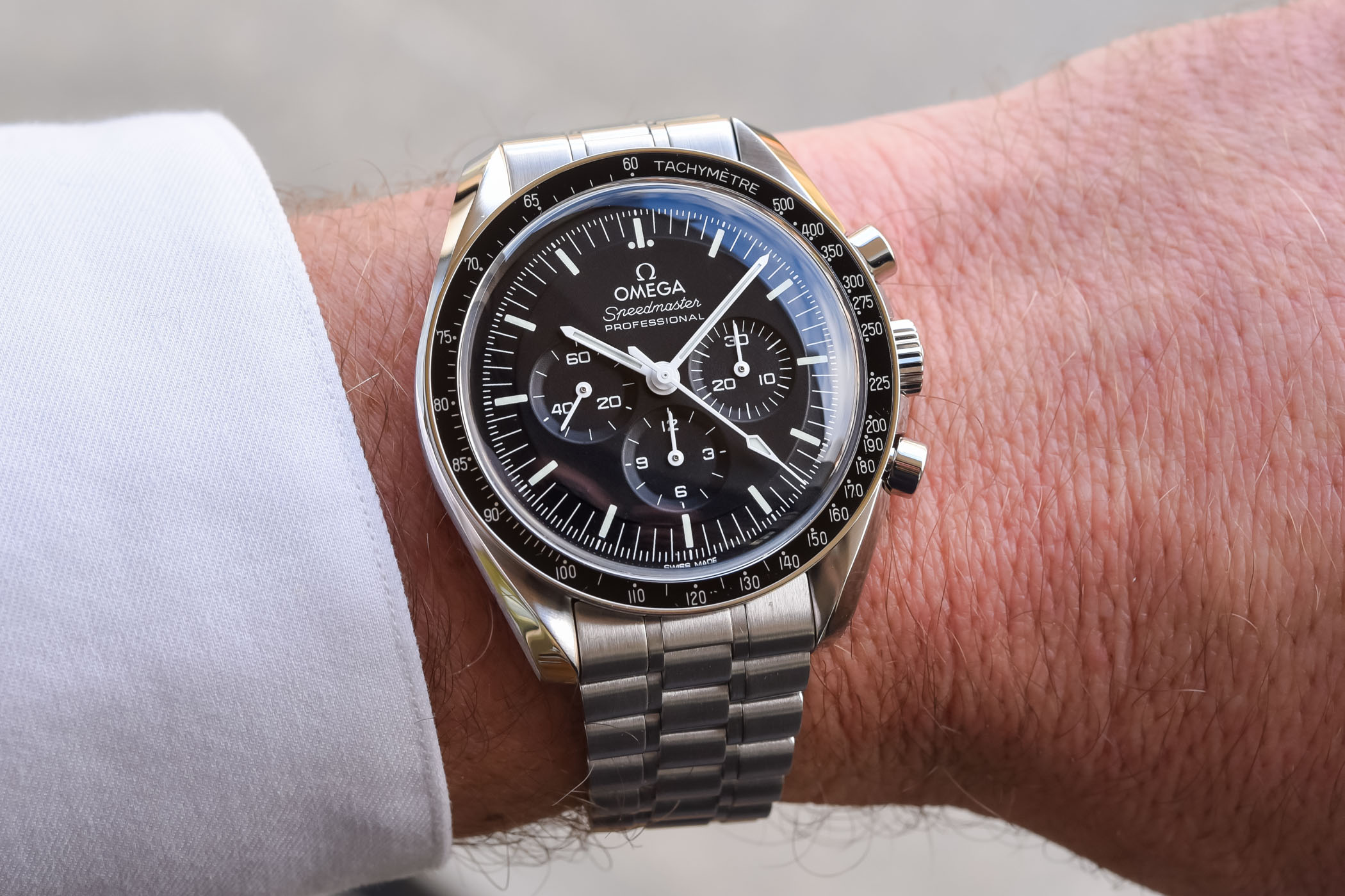
Finally, the bulky folding clasp of the 3750.50 is also gone. The new Moonwatch benefits from a smaller, shorter, thinner clasp with a banded finish, a brushed surface on top, a polished old-school Omega logo and a two-position micro-adjustment – Omega could have done a slightly better job here, however. It is still secured by two lateral pushers. The length of the bracelet can be adjusted thanks to screws.
As said earlier, two versions of this bracelet are available. One is reserved for the Hesalite model, with a full brushed finish. The sapphire model has polished inter-links.
Note: we had the question concerning this new bracelet and if it will fit older Speedmaster watches. From what we’ve seen on Instagram here, the new bracelet can be installed on all previous generation models (1996-2020, meaning ref. 3750.50 and later) without modifications. The fit isn’t as perfect as on the 2021 generation and there’s a very minimal gap between the end-link and the case.
The main update: the calibre 3861
Of course, let’s move on to the real deal with this new Speedmaster Moonwatch Professional, the fact that it is now a Co-Axial Master Chronometer and is fitted with the new Calibre 3861. After over 50 years of production, it was time for Omega to update its venerable 1861 and, in order to be consistent with the rest of the collection, to have it certified by the demanding Master Chronometer standards.
Launched in the gold Speedmaster Apollo 11 50th Anniversary and a couple of months later in the Steel Speedmaster Apollo 11 50th Anniversary, this new calibre, dubbed 3861, includes all the modern technologies that the brand developed over the past 10 years. It has also been used in the recent Snoopy watch. However, it also remains visually close to the old movement, it is still hand-wound, it still has its cam mechanism to actuate the chronograph and the clutch is still horizontal. In short, it retains the best of the old engine and incorporates the best of Omega’s watchmaking expertise.
First of all, a sign of its evolution, the calibre 3861 counts 26 jewels, versus only 18 in the calibre 1861. The Swiss lever escapement has been replaced by a co-axial escapement and the hairspring is now made from silicon, hence the impressive magnetic resistance of the movement – the usual 15,000-gauss resistance required by METAS. The regulating organ still beats at 3Hz (or 21,600 vibrations/hour) and the power reserve is now 50 hours – a small increase over the 48 hours offered by the calibre 1861. Its precision will be within the 0/+5 seconds/day range defined by Omega. Finally, it incorporates a hacking second mechanism, something that the Speedmaster never had in the past.
Finally, the decoration has been drastically improved, especially over the calibre 1861. The calibre 1863 that was used in previous sapphire sandwich models was already nicely finished, though – but as said, this differentiation doesn’t exist anymore. The Co-Axial Calibre 3861 is mostly rhodium-plated and features Geneva stripes on the bridges, straight brushed levers, polished bevels on the most of the parts, a circular-grained main plate, polished screws with bevelled slots, polished jewel and screw countersinks and gold-coloured chronograph wheels. It is, objectively, a very nice movement with a decoration that will please most watch enthusiasts.
The Speedmaster Moonwatch Professional Master Chronometer steel collection, and prices
In addition to the 4 references in Sedna (pink) or Canopus (white) gold, the new Speedmaster Moonwatch Professional Master Chronometer collection welcomes 4 stainless steel references, as it used to be in the past. This means two Hesalite versions, one with a fully brushed steel bracelet and one with a modern and instrument-looking nylon fabric strap on folding clasp. Also, there are two sapphire models, one with a brushed and polished steel bracelet and one with a classic smooth leather strap with folding clasp.
- Steel case, brushed steel bracelet, Hesalite crystal, black dial with printed logo, closed caseback – 310.30.42.50.01.001 – EUR 6,200
- Steel case, coated nylon fabric black strap on folding clasp, Hesalite crystal, black dial with printed logo, closed caseback – 310.32.42.50.01.001 – EUR 5,900
- Steel case, brushed and polished steel bracelet, sapphire crystal, black dial with applied logo, sapphire caseback – 310.30.42.50.01.002 – EUR 7,000
- Steel case, calfskin black leather strap on folding clasp, sapphire crystal, black dial with applied logo, sapphire caseback – 310.32.42.50.01.002 – EUR 6,700
Compared to the previous models, Omega has increased the price by EUR 1,300 (EUR 6,200 vs. EUR 4,900) for the Hesalite model on a steel bracelet. For the sapphire model on a steel bracelet, the price has been increased by EUR 1,200 (EUR 7,000 vs. EUR 5,800).
Thoughts
What to think about this new generation Omega Speedmaster Moonwatch Professional? Objectively, looking at facts and specifications, it will be hard to find flaws. Most of the areas that could be updated have received upgrades. The new movement is a massive jump in the 21st century and its chronometer certification, its co-axial escapement, its magnetic resistance are, without doubt, adding a lot to the perceived value and user experience. It is also better finished and still looks almost exactly like an old movement, which adds to the iconic feel of the Speedmaster.
As for the visual updates, no doubt that Omega did a great job. The new case, thinner and a bit more compact, the redesigned bracelet that looks more elegant and that will ensure much better comfort, the nicer clasp, the vintage details of the bezel and the step dial are really nice additions that again make this watch even more appealing than before. Still, the watch is still very much a Speedmaster Moonwatch Professional and the updates don’t degrade the cult status of this watch – at all! Every aspect of the watch has been refined, upgraded, improved. The Speedmaster was already a great watch and Omega has done an even greater one with this 2021 model. And of course, if you weren’t a fan of the Speedmaster in the past, this new generation probably won’t change your opinion…
About the topic of the price, I think the increase is justified, considering the impressive amount of upgrades and the presence of a much more complex movement. The Speedmaster, which can still be acquired for less than EUR 6,000 in this 2021 version, remains one of the best chronographs you can think of.
Now, as a Speedmaster enthusiast myself and owner, what to choose…? Funny enough, with the previous generation, I went for the Hesalite model on a leather strap. Not only I didn’t like the look of the older bracelet but I though the Hesalite made the watch cooler, more authentic, more desirable. With the new generation, I’d tend to go for the complete opposite, meaning the sapphire sandwich version on a steel bracelet. First of all, I want to see this new Calibre 3861. Then, it is a detail but that applied Ω logo is really cool. Finally, the new bracelet is far more appealing than in the past. And if you’re the owner of the older Speedmaster Moonwatch Professional, I even think that considering this new Co-Axial Master Chronometer model will make sense, knowing how deep the update is. Well done Omega.
For more details, visit www.omegawatches.com.
update 08/01/2021 - lug to lug dimension added update 10/02/2021 - details about the bracelet and the small hands

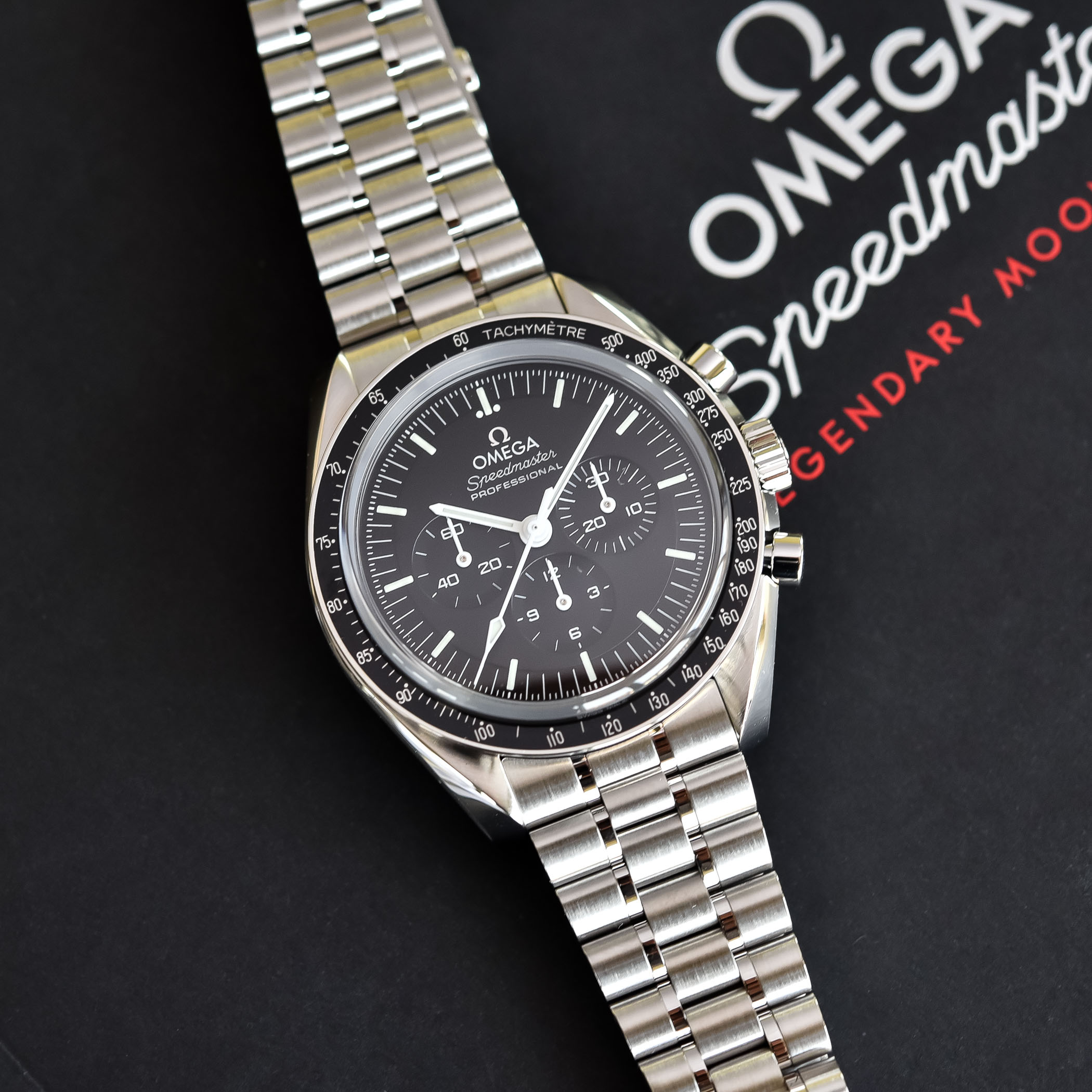

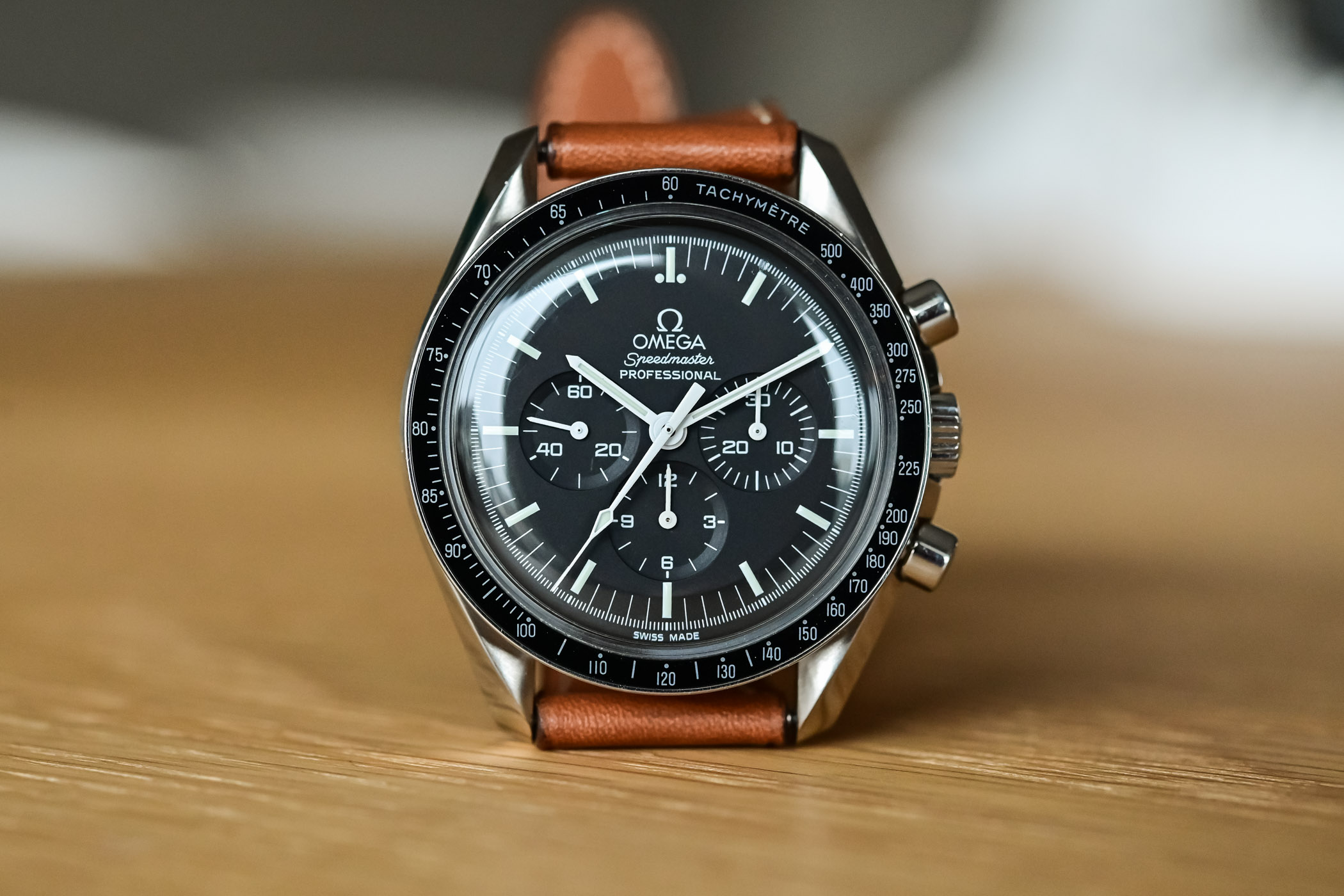
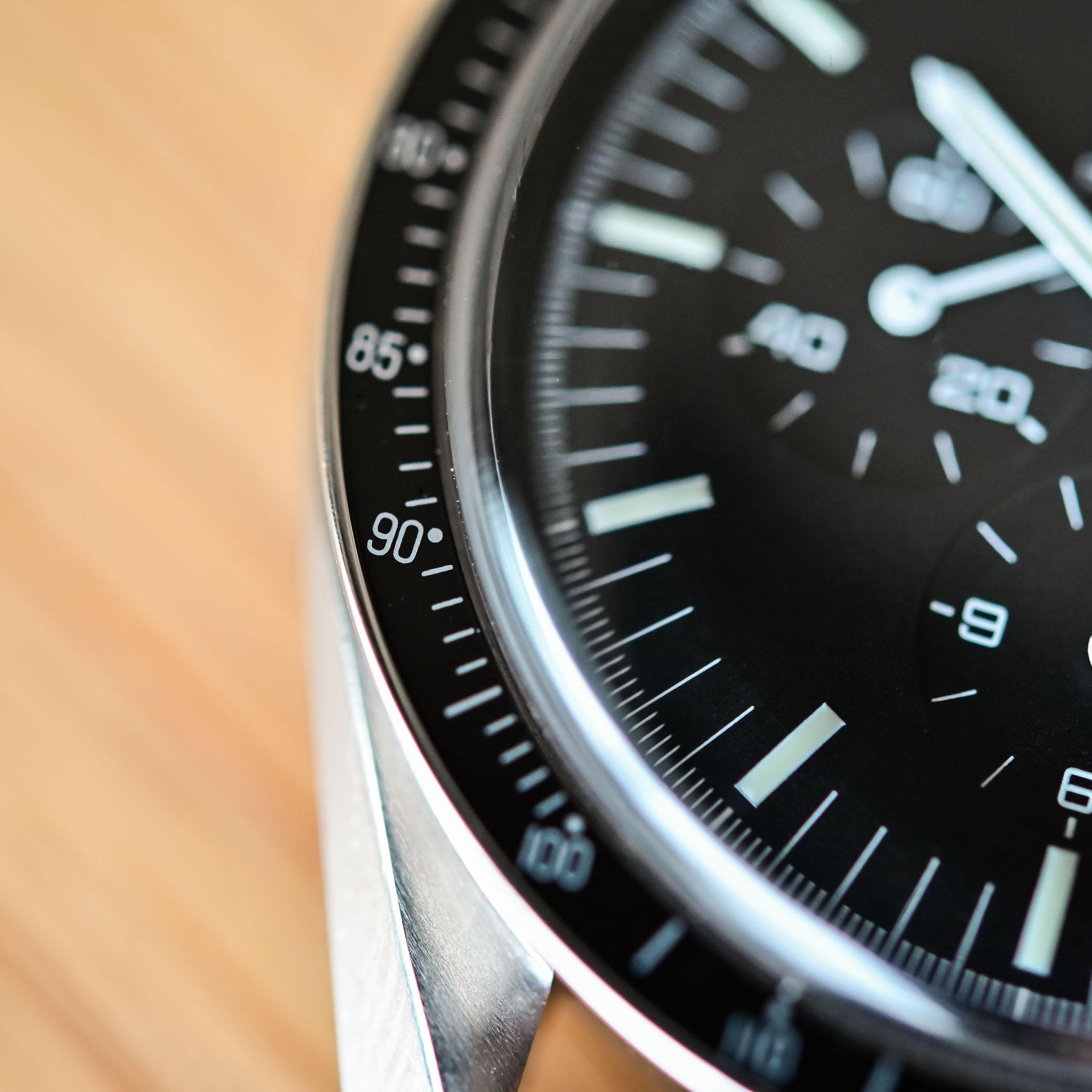
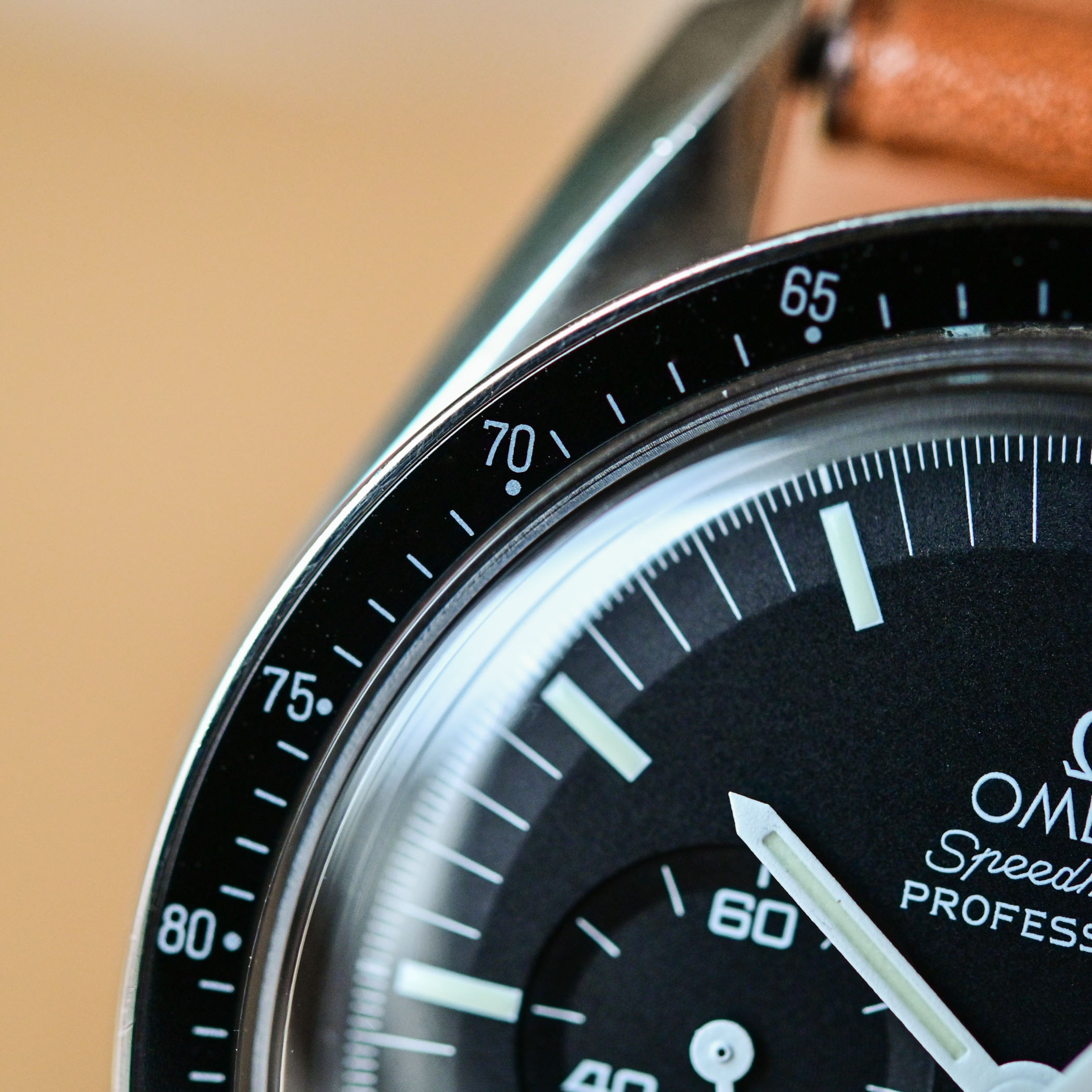
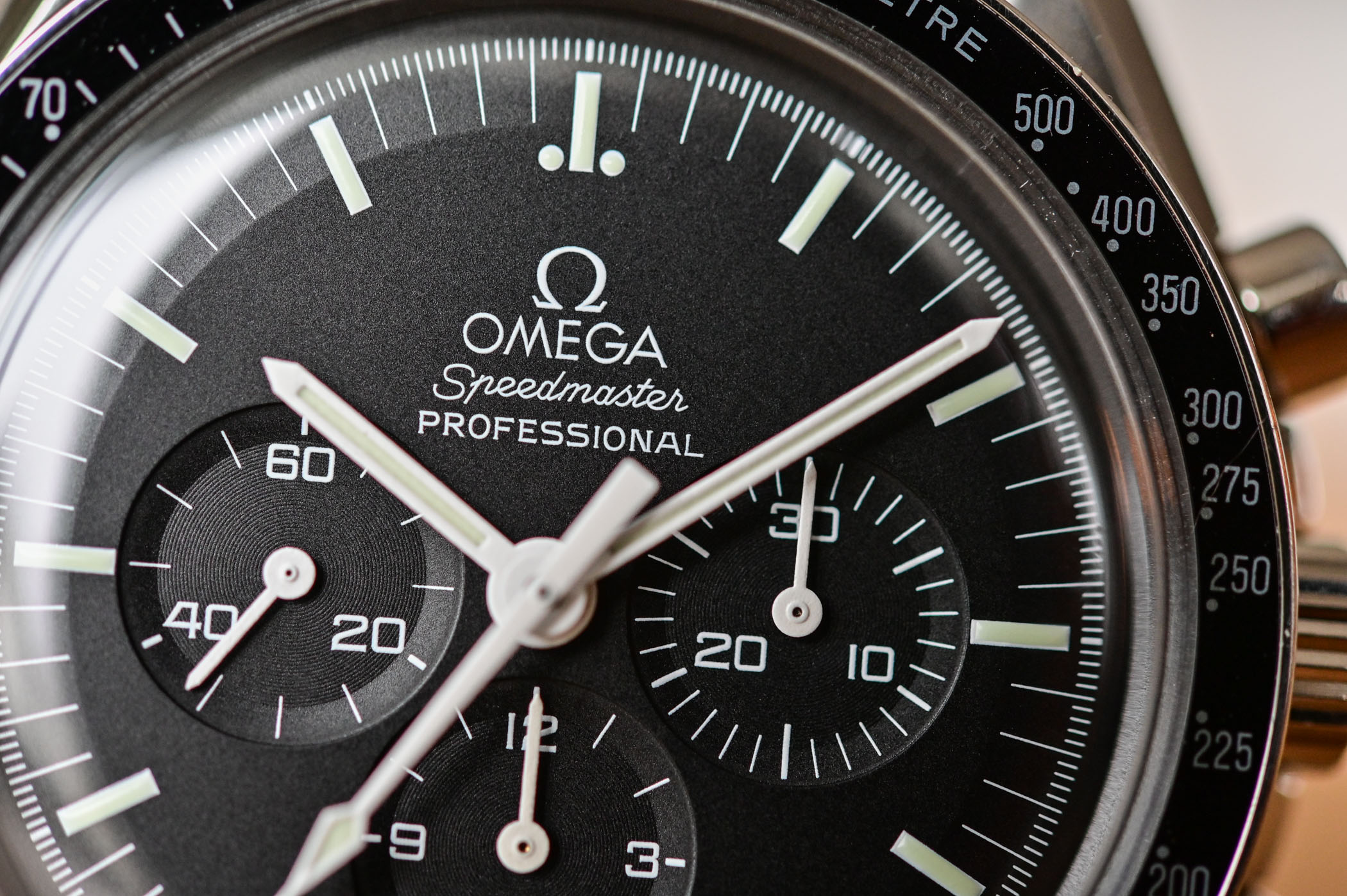
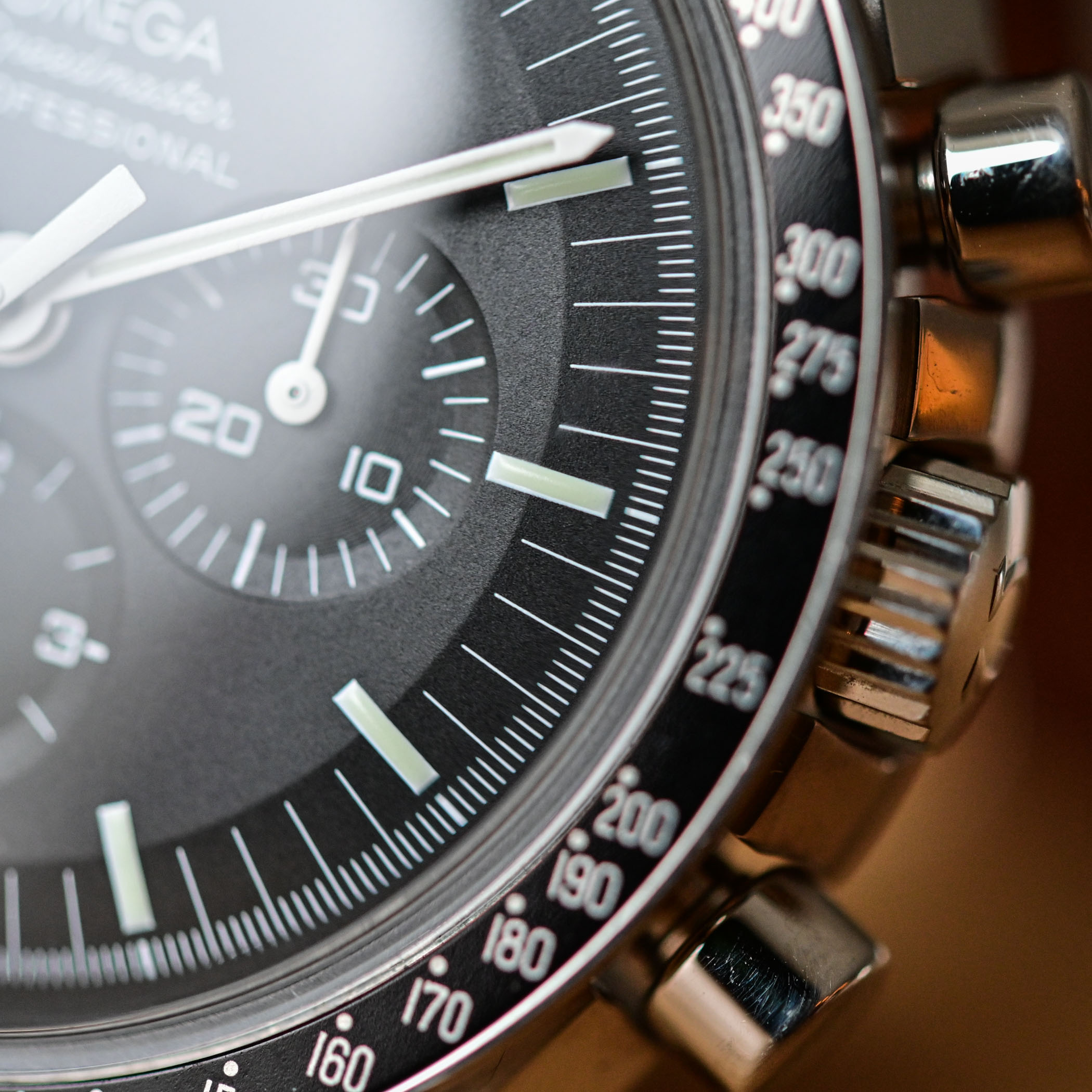
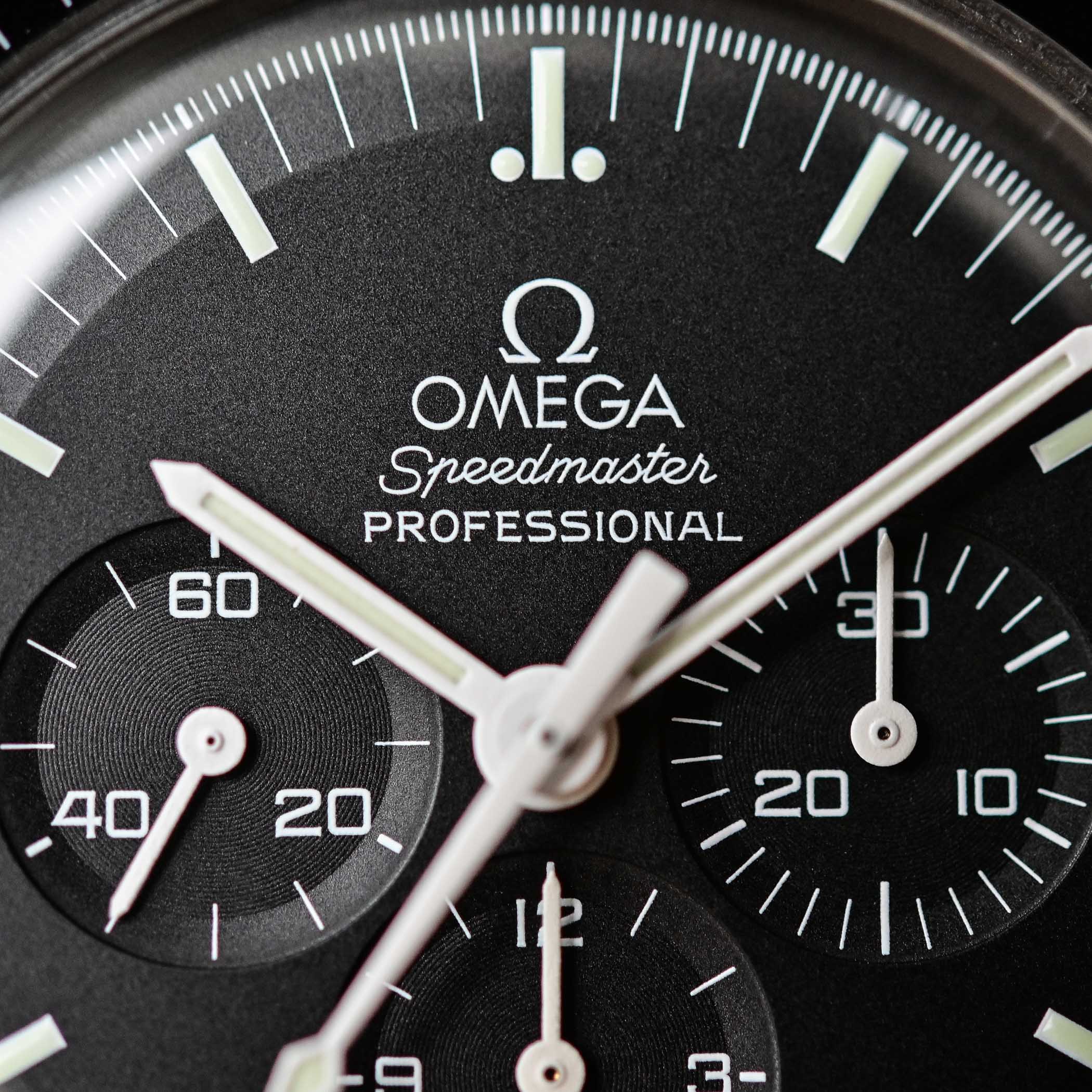
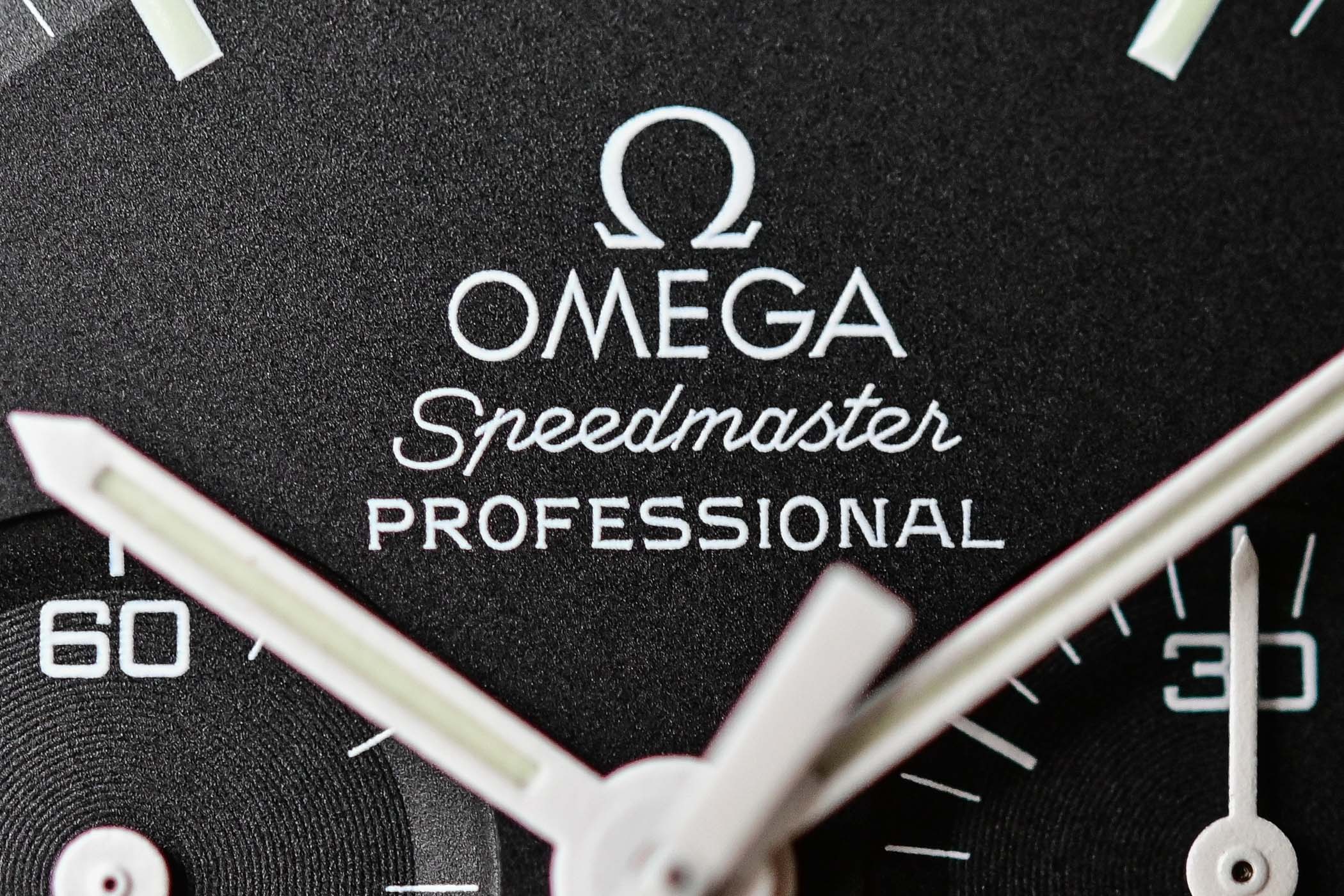
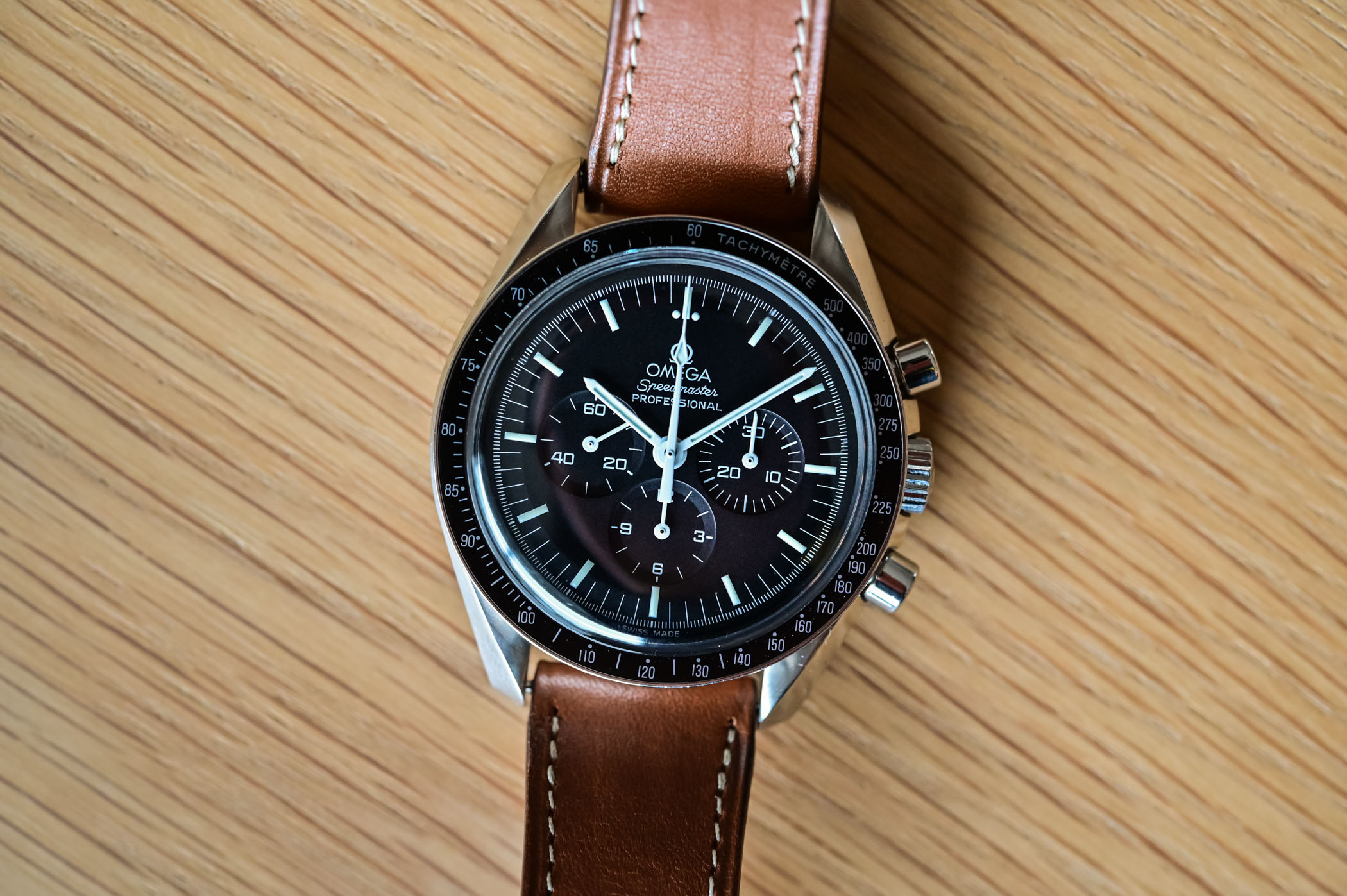
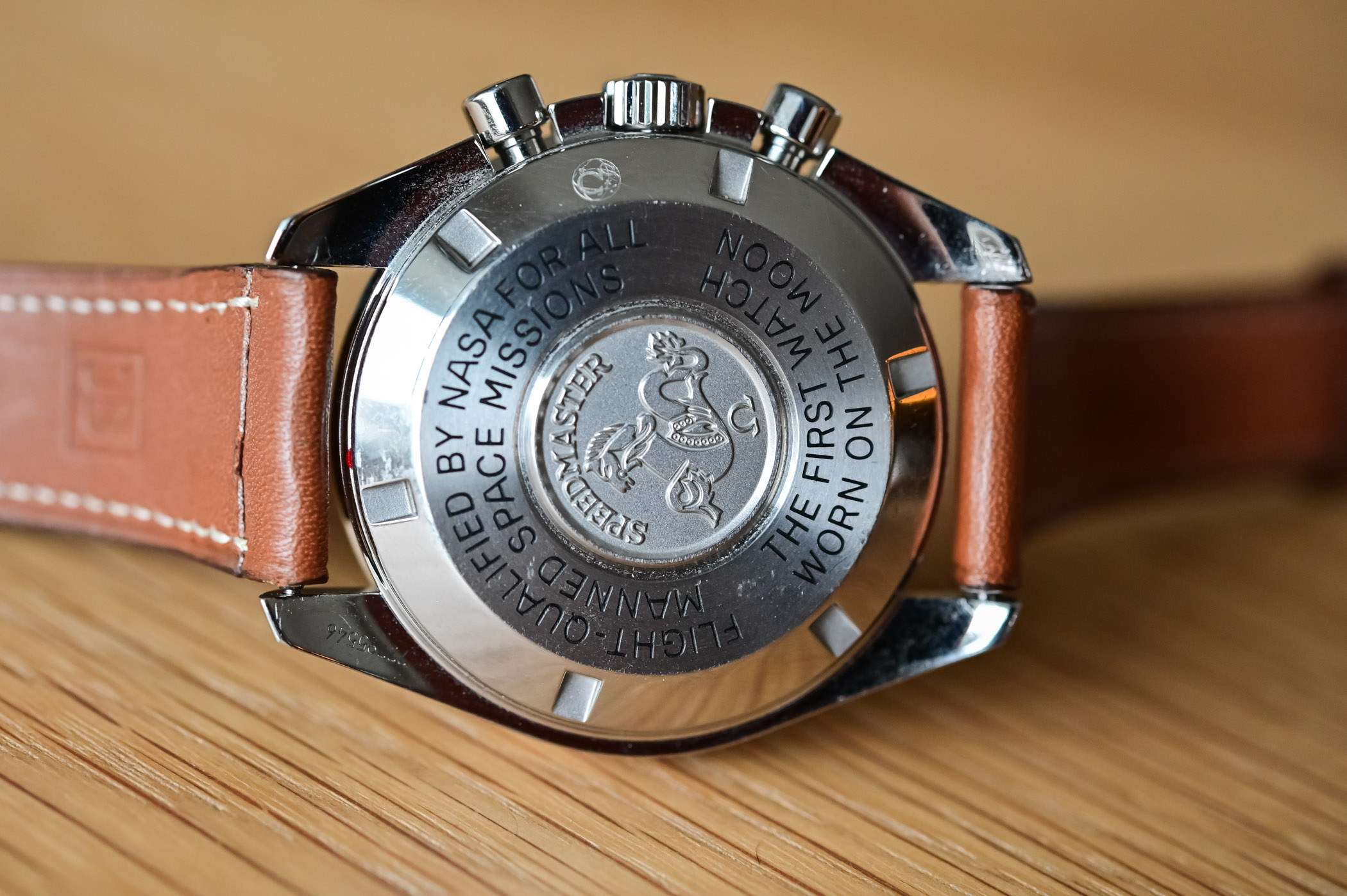
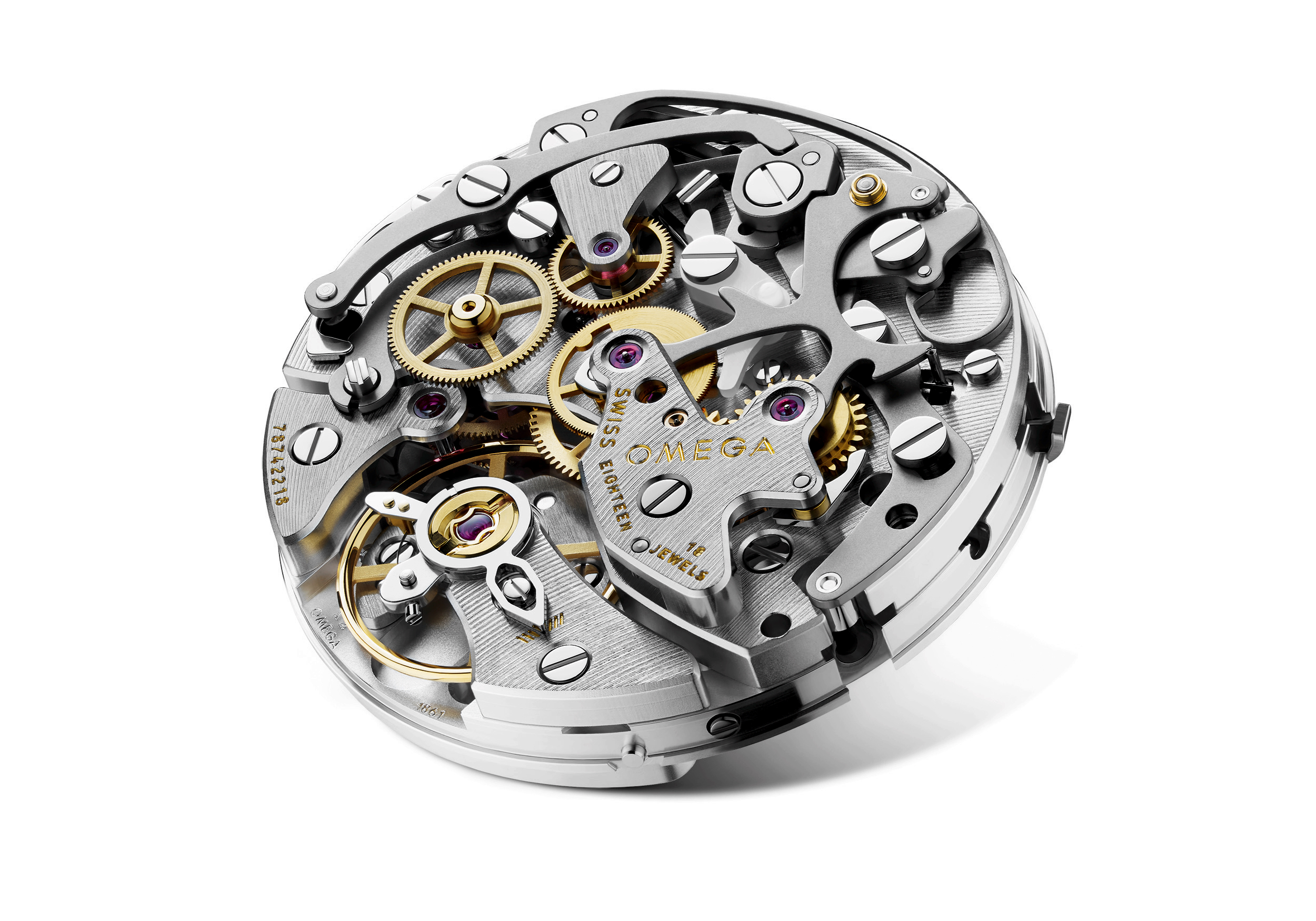
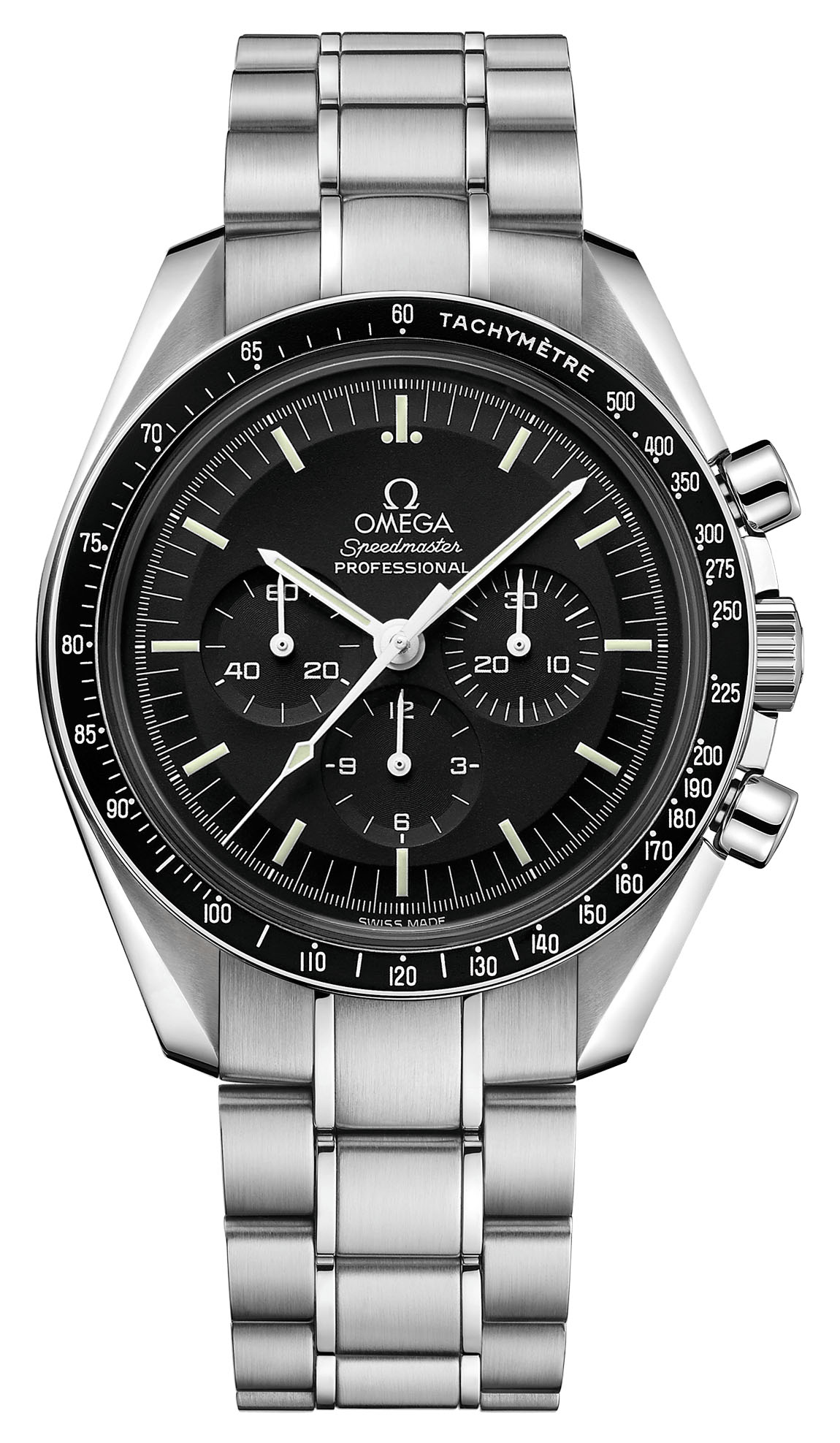
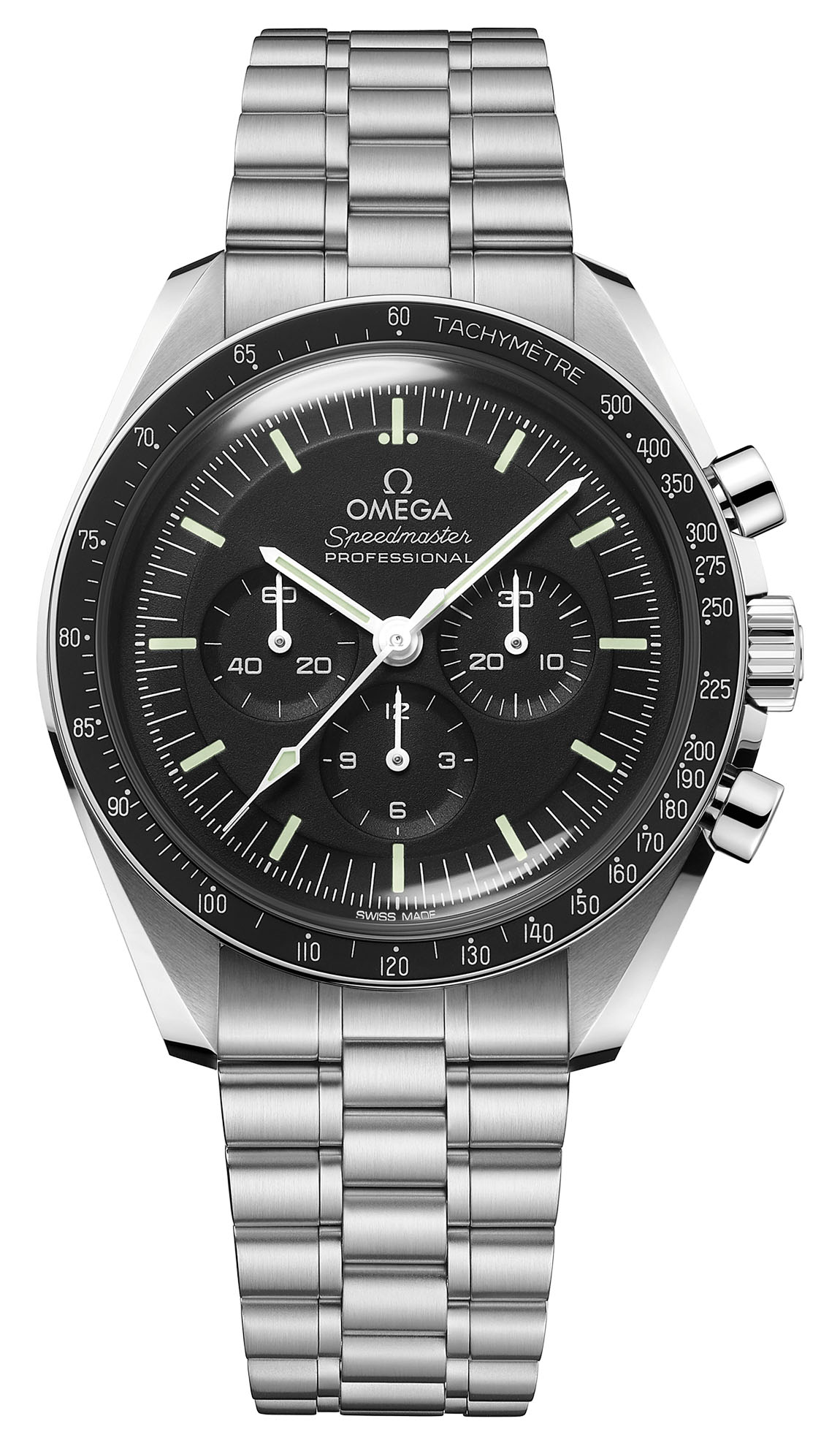
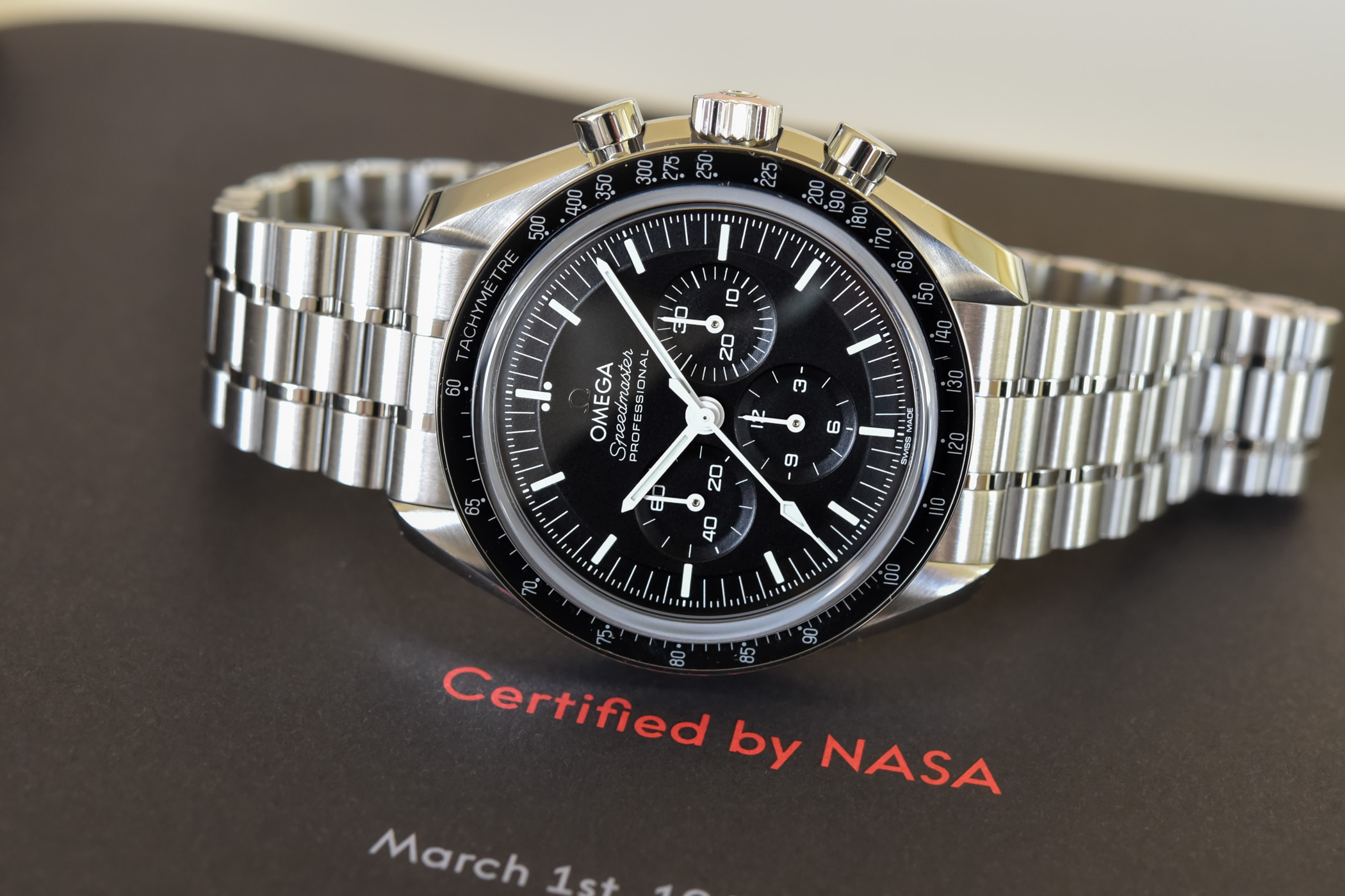
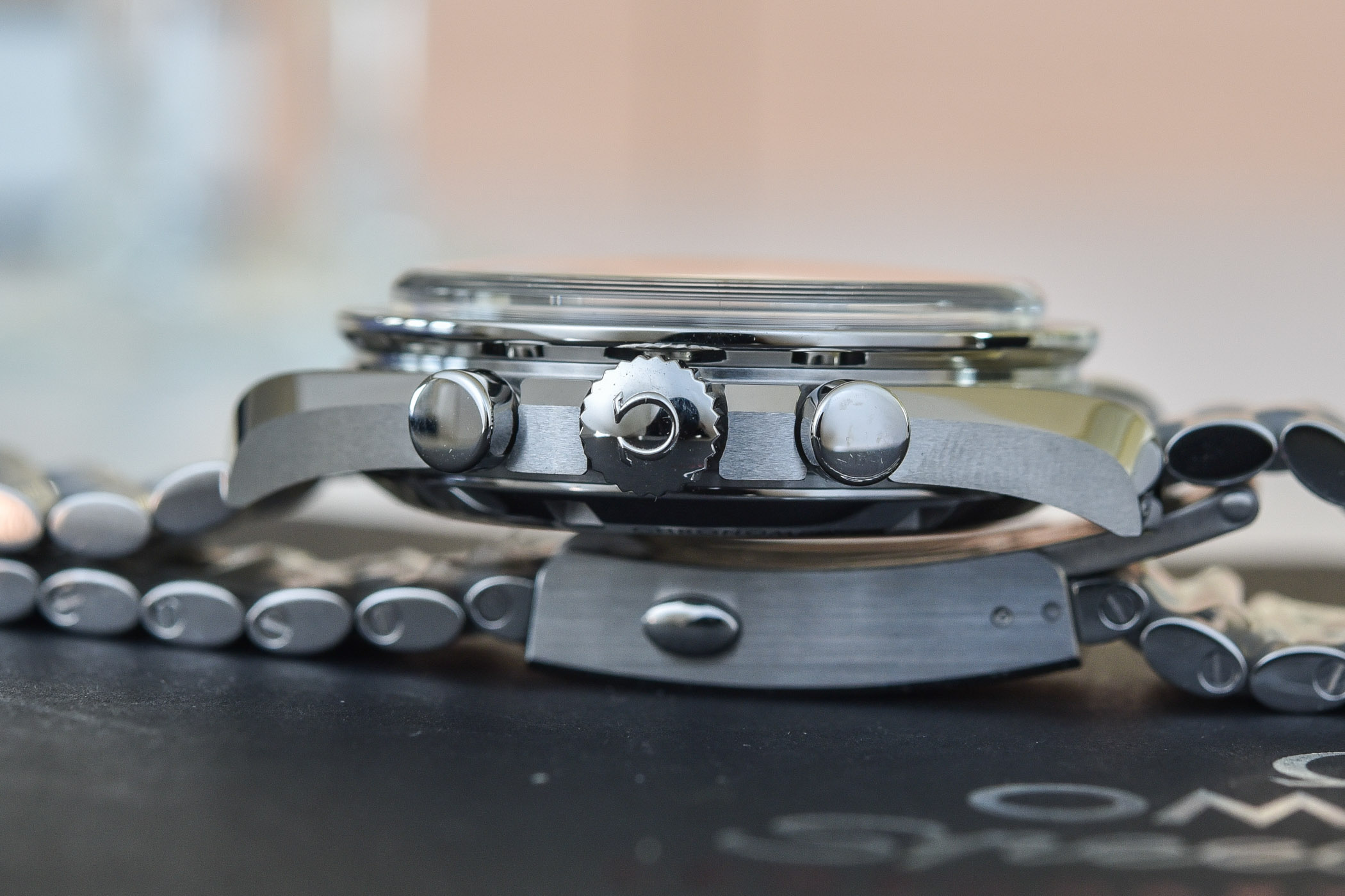
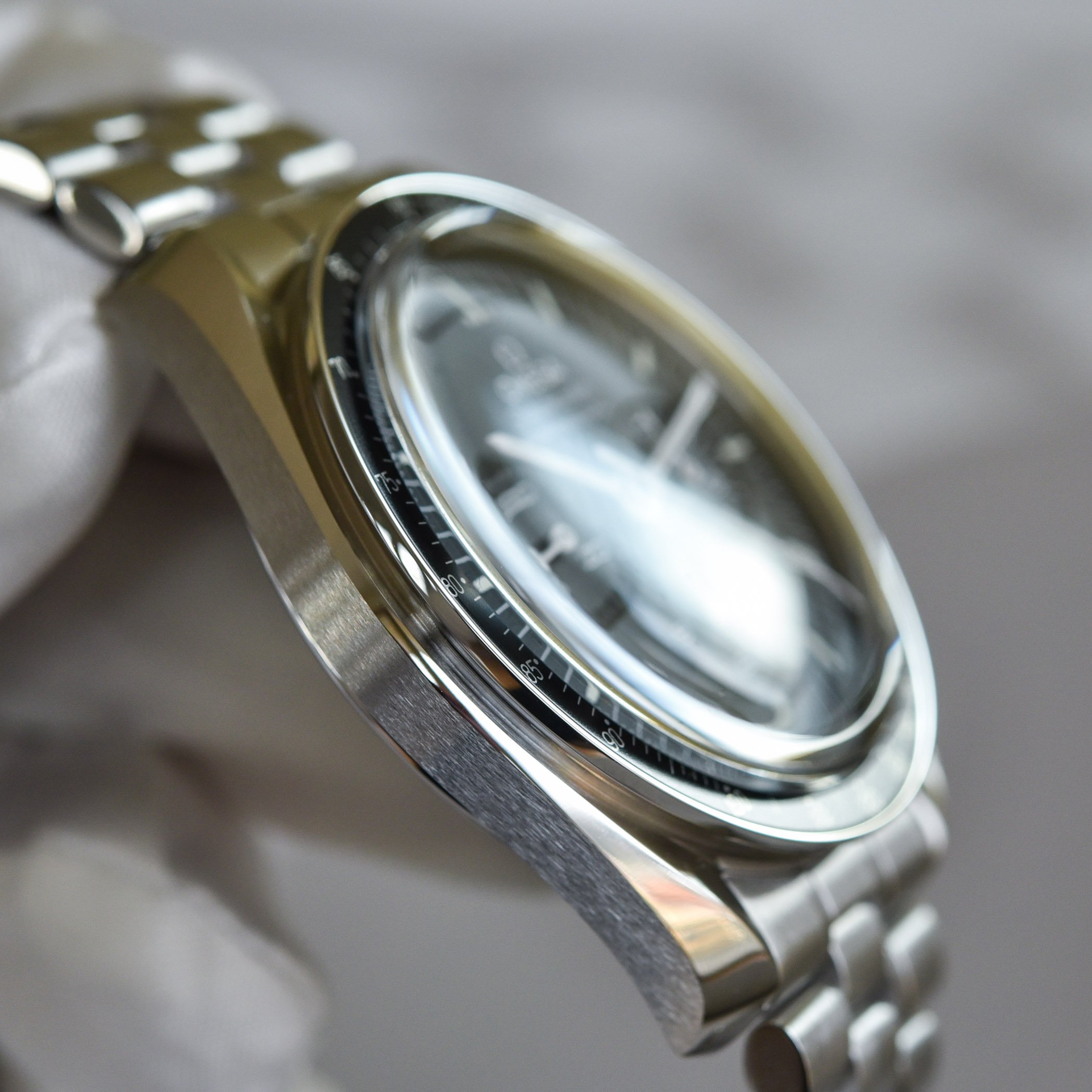

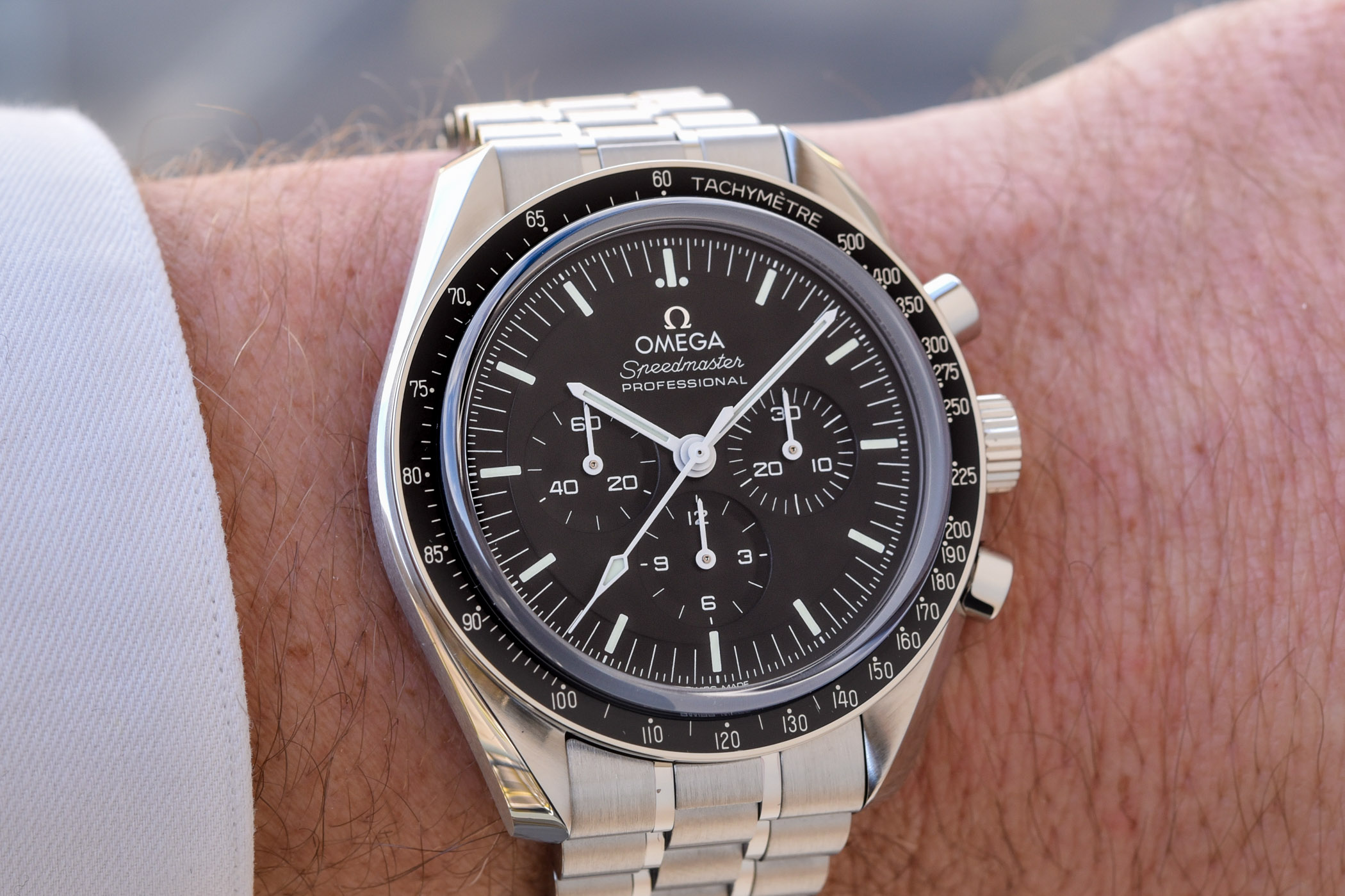
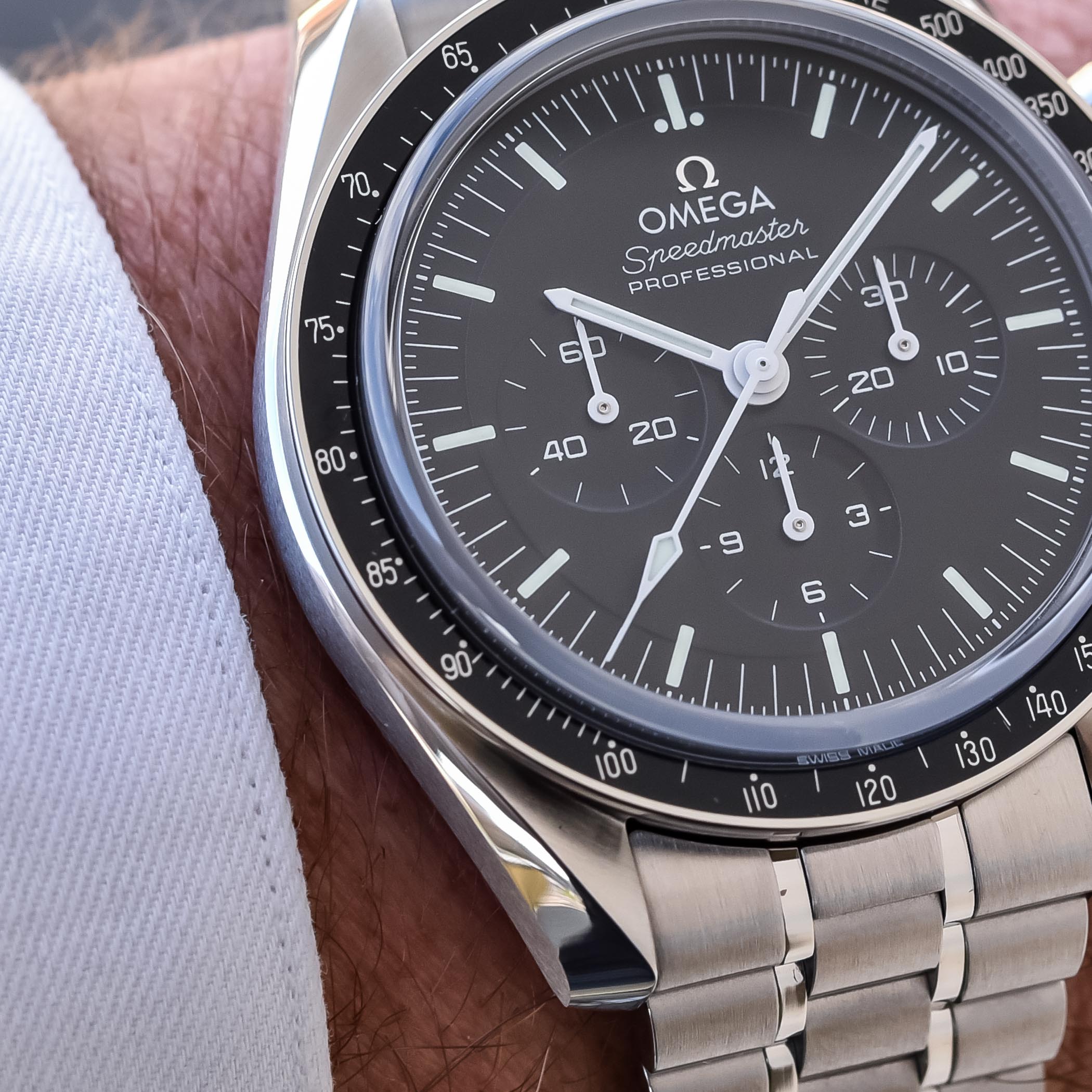
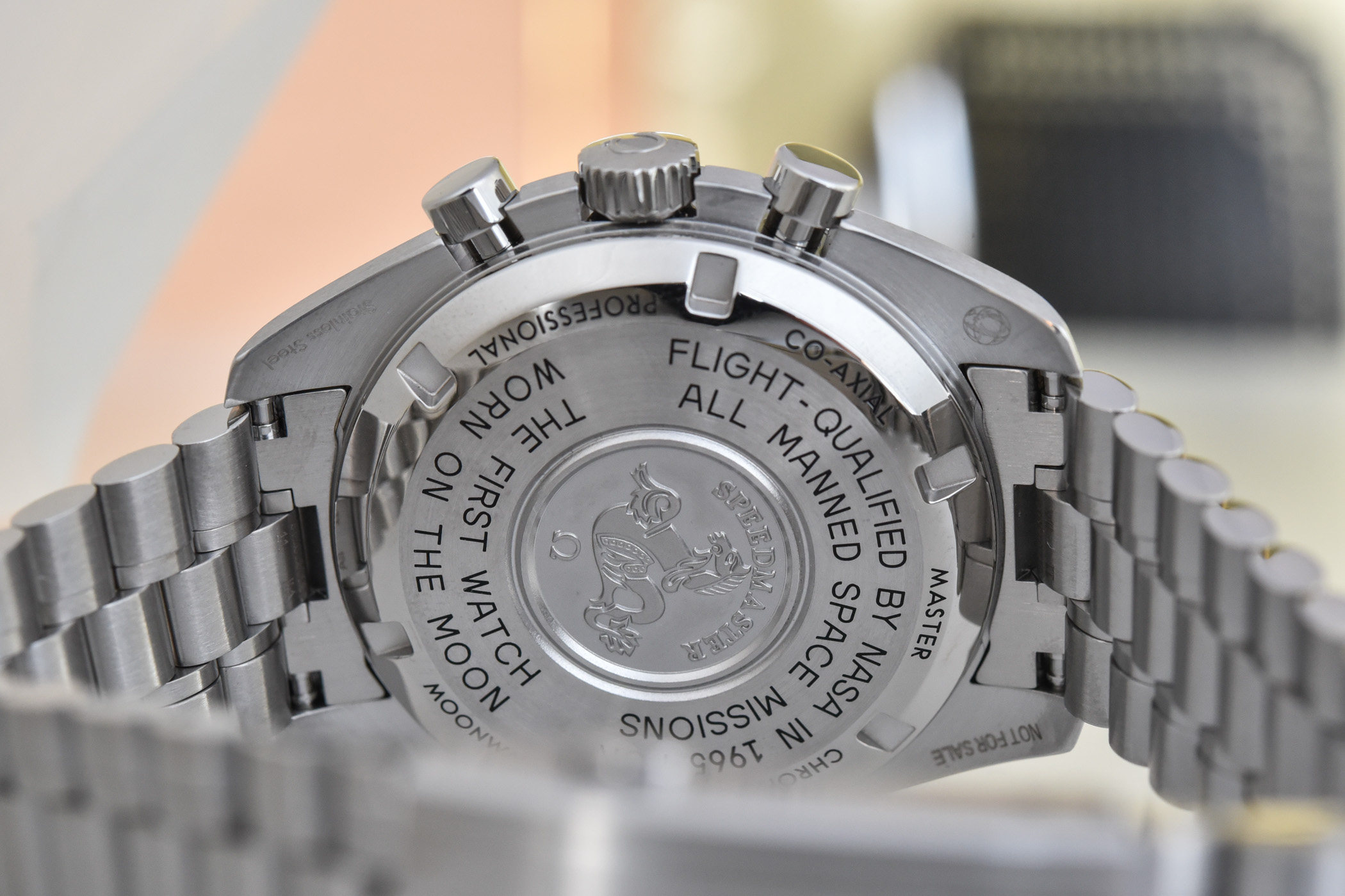

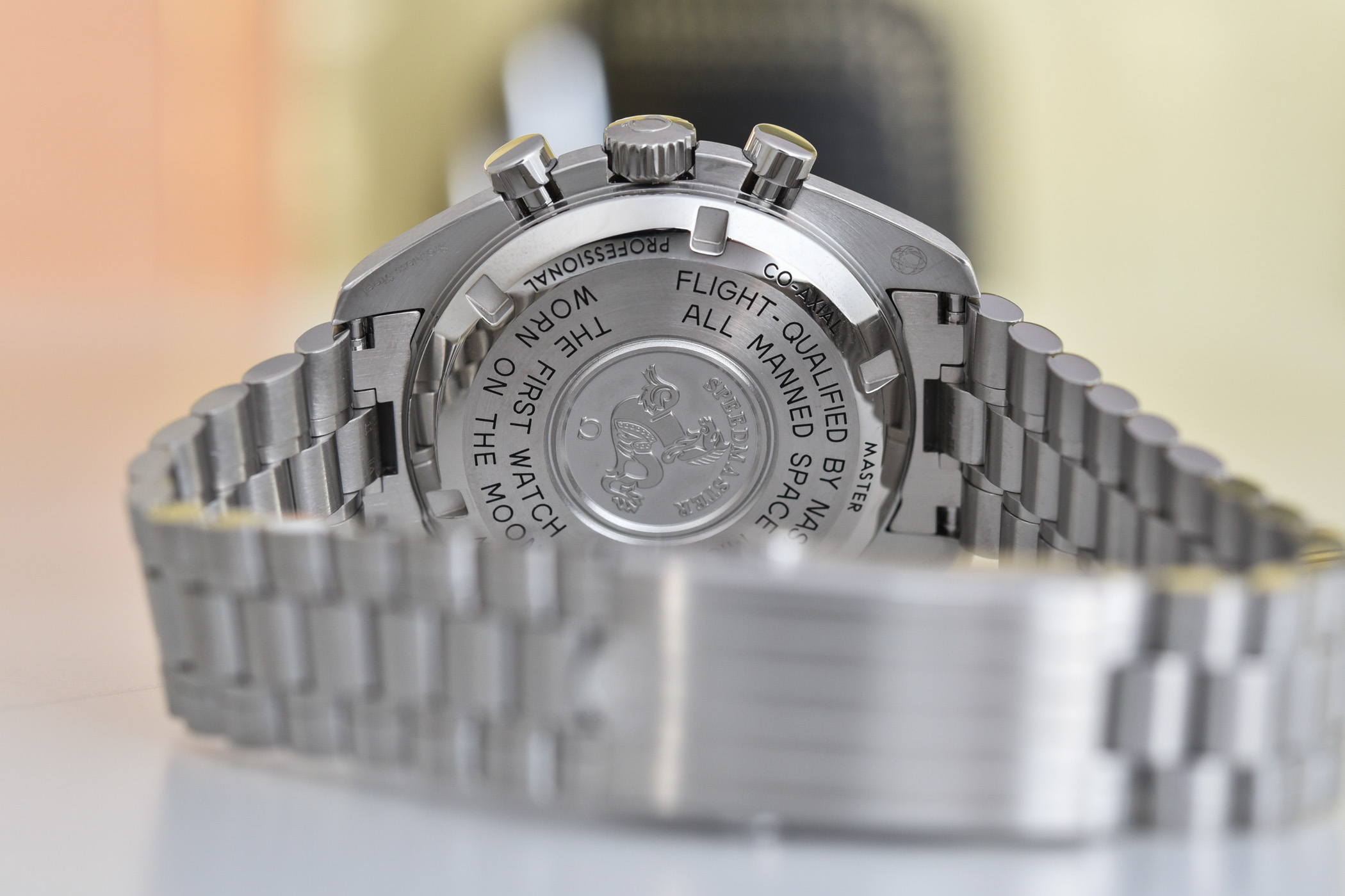

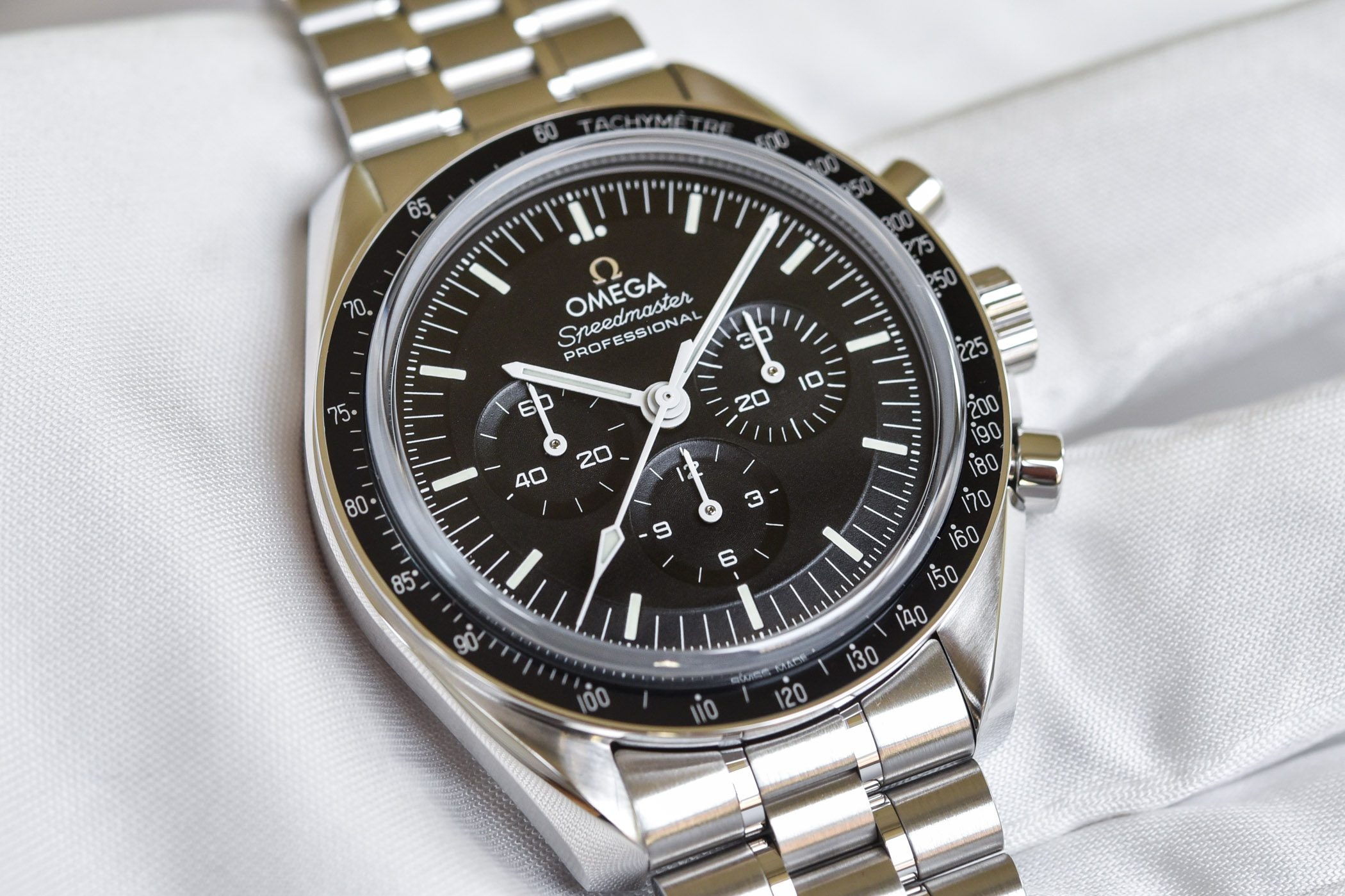
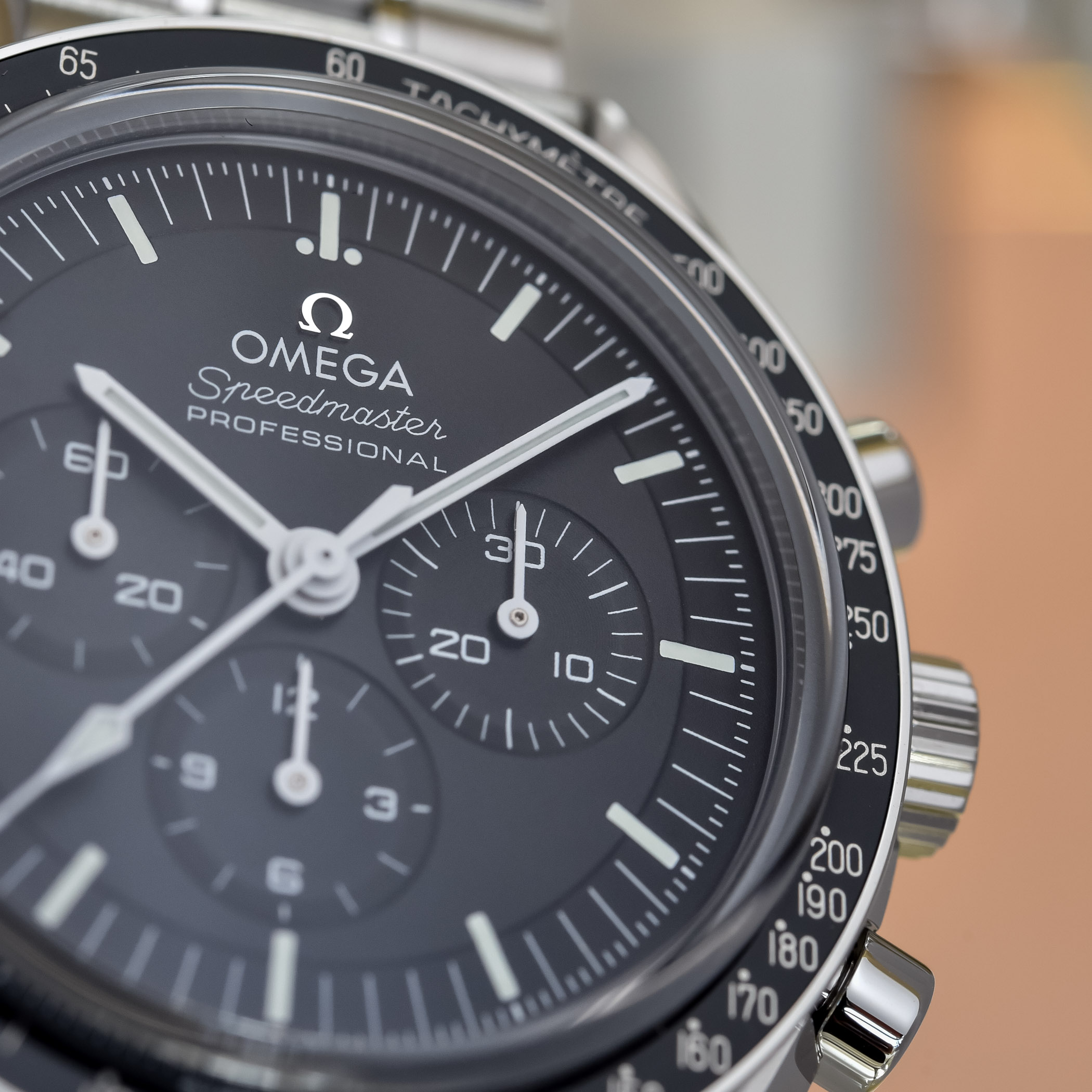
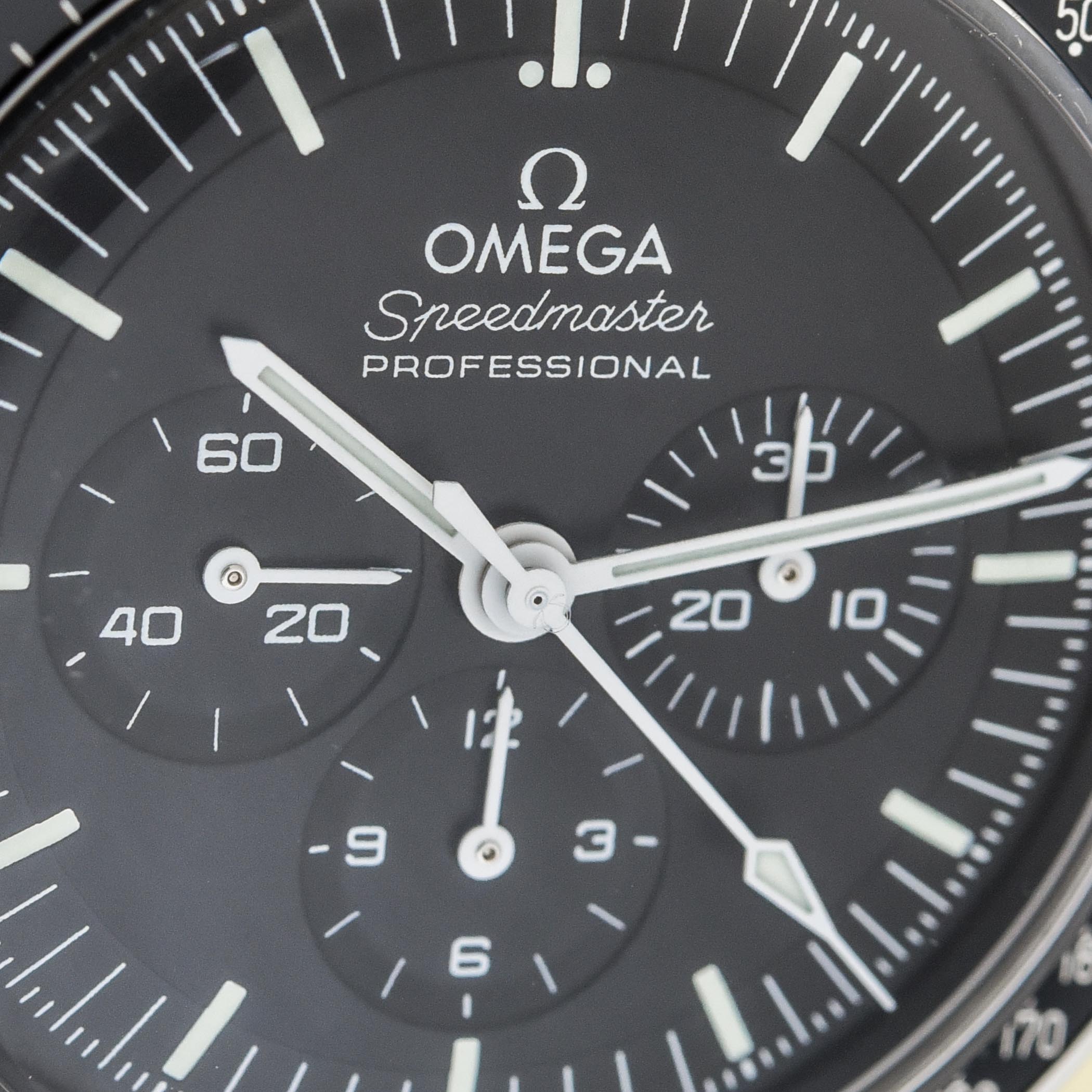

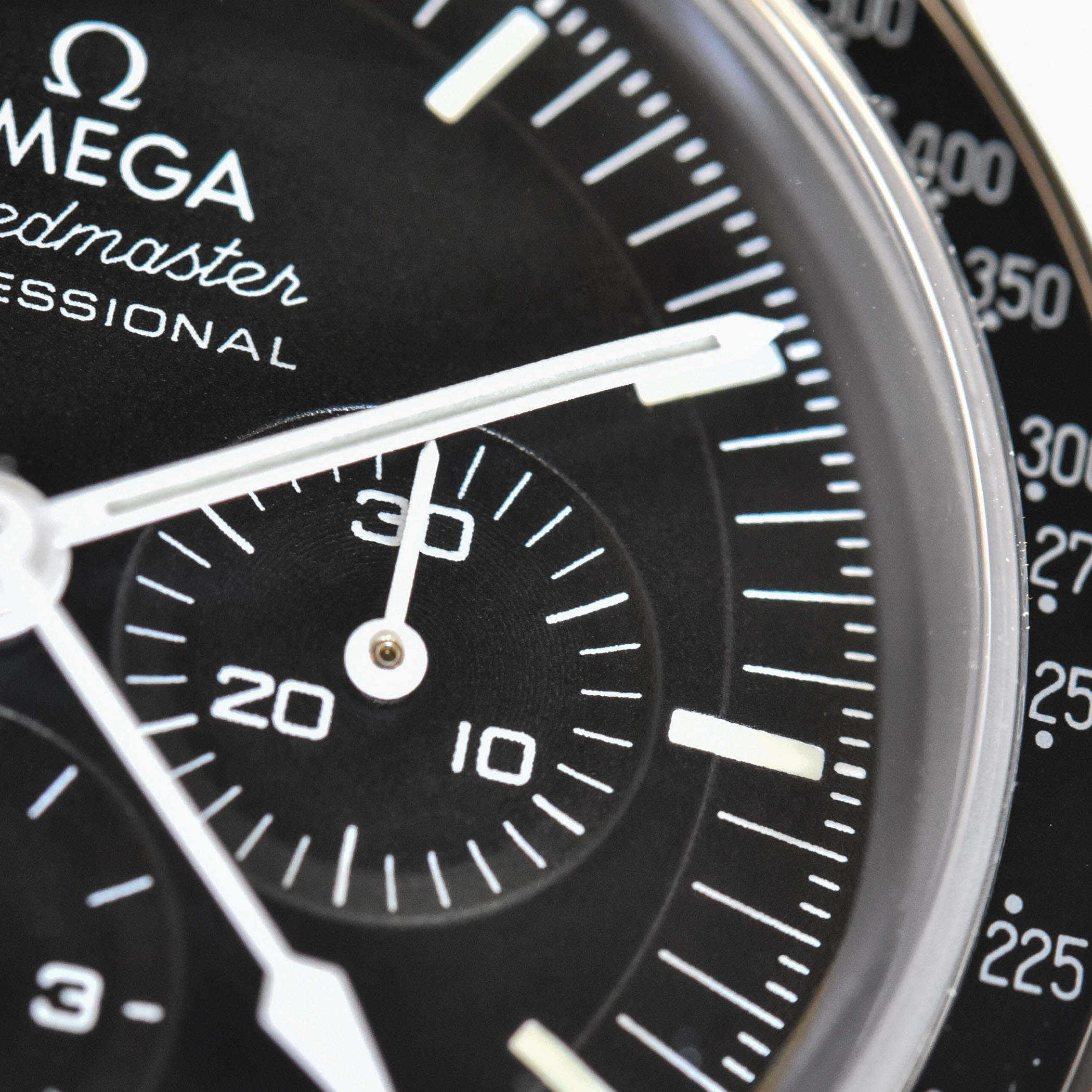
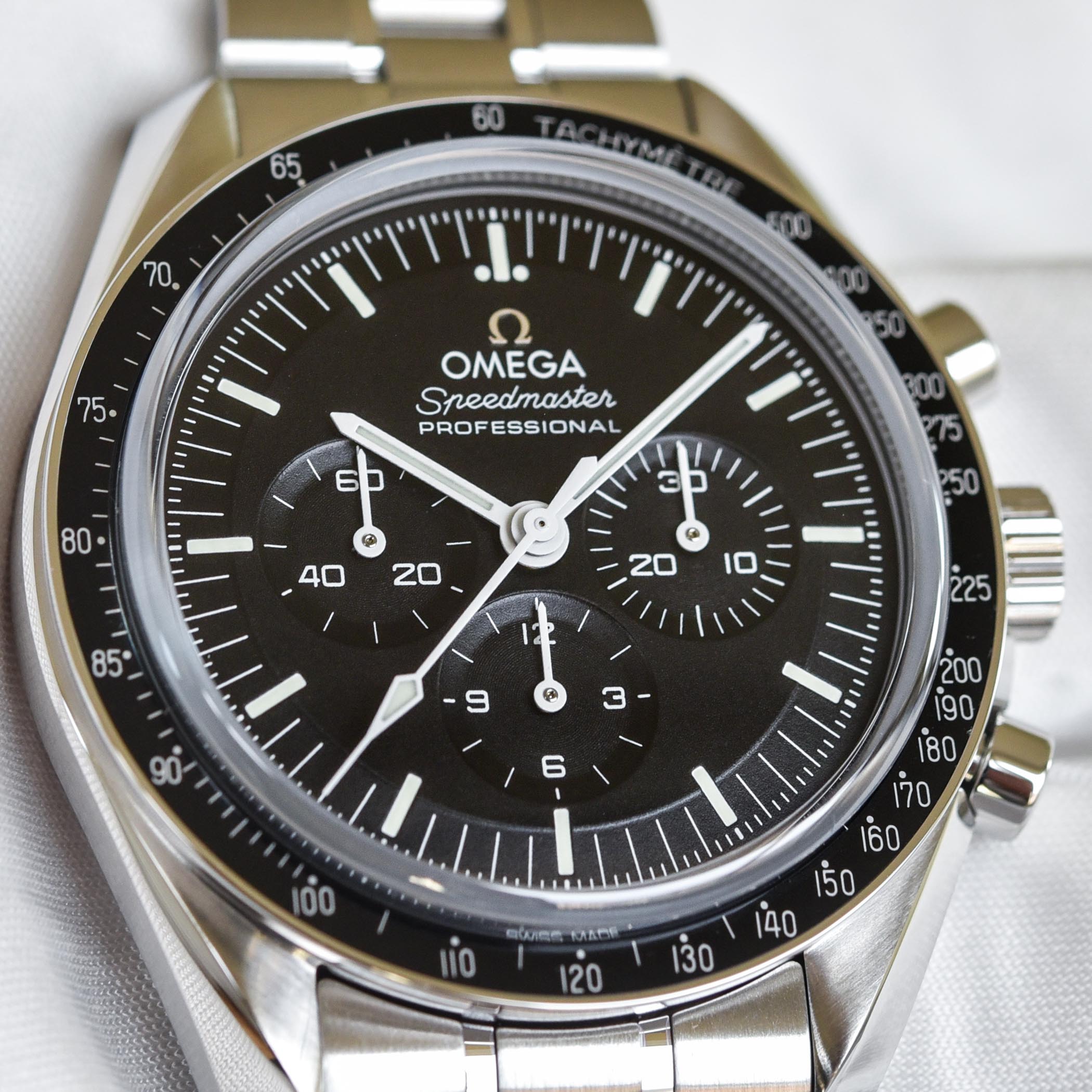
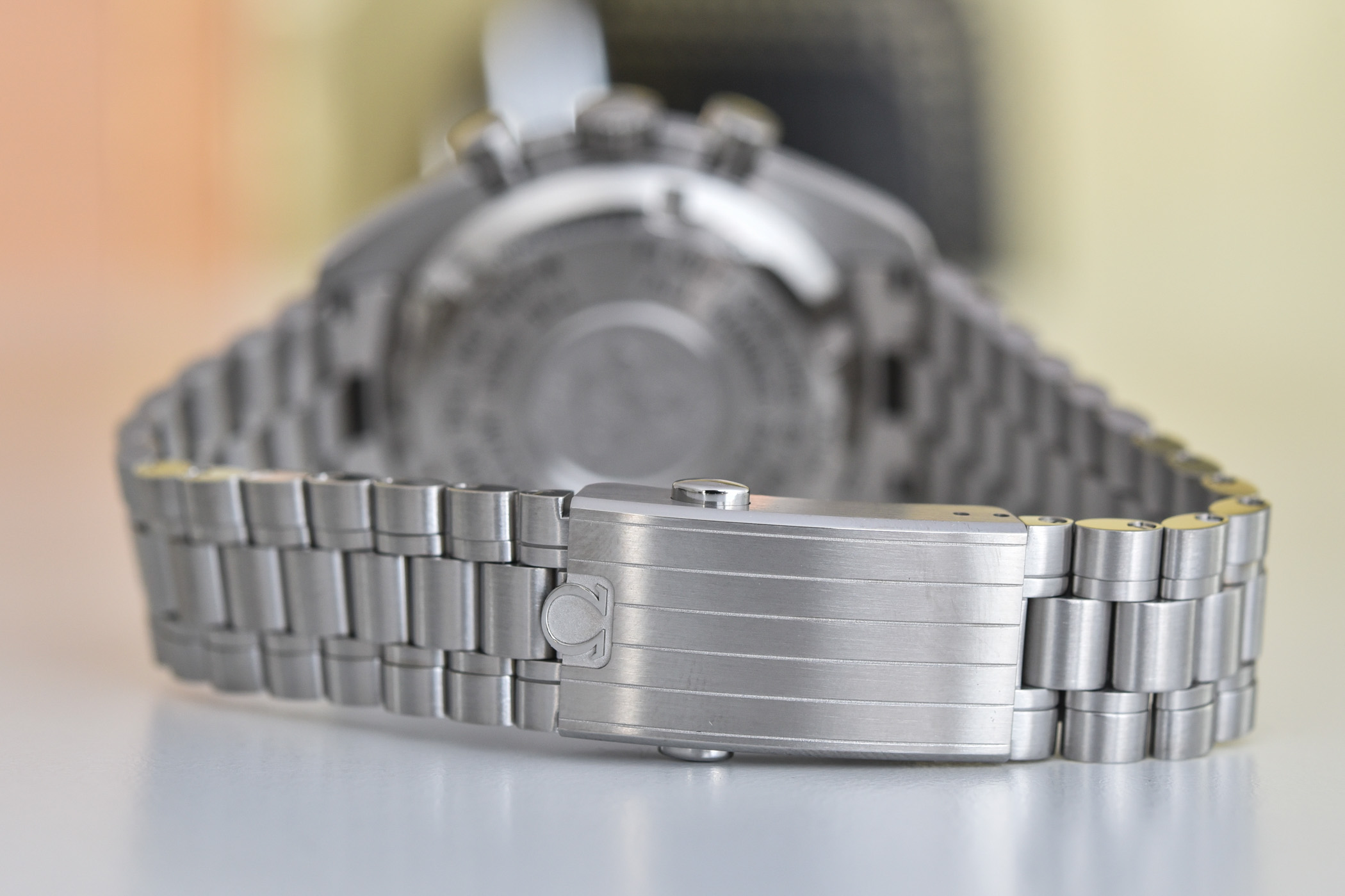
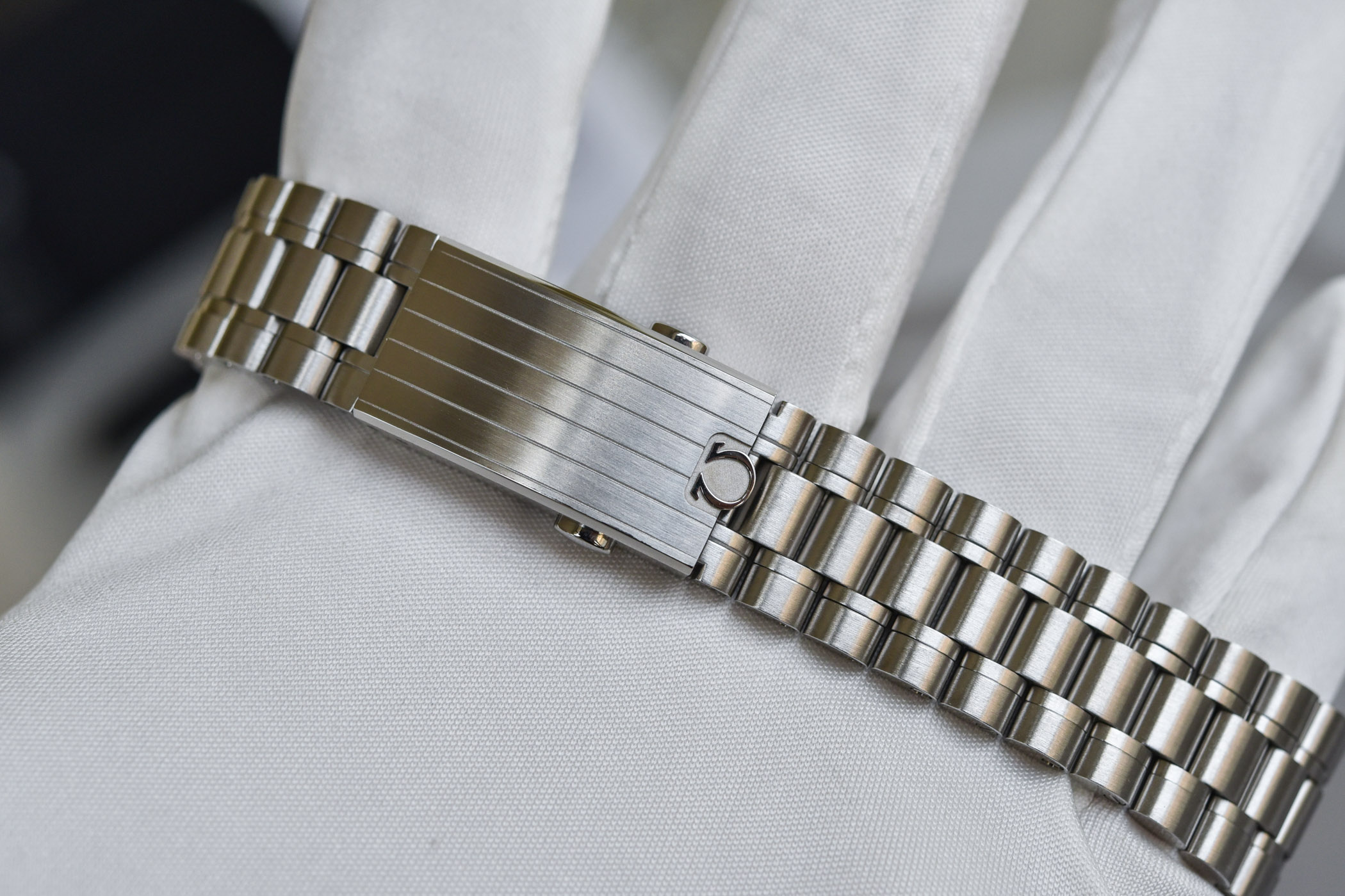
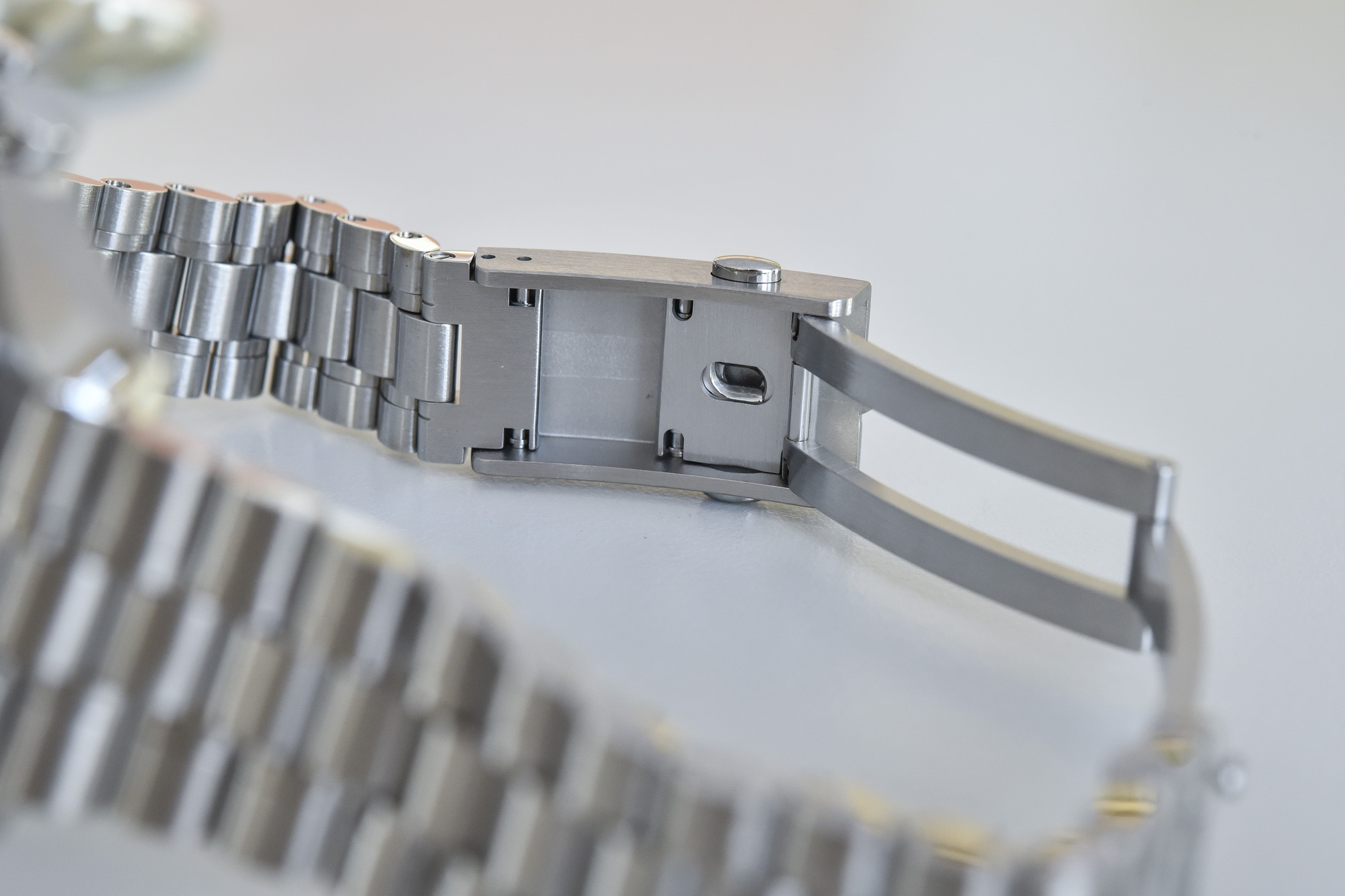
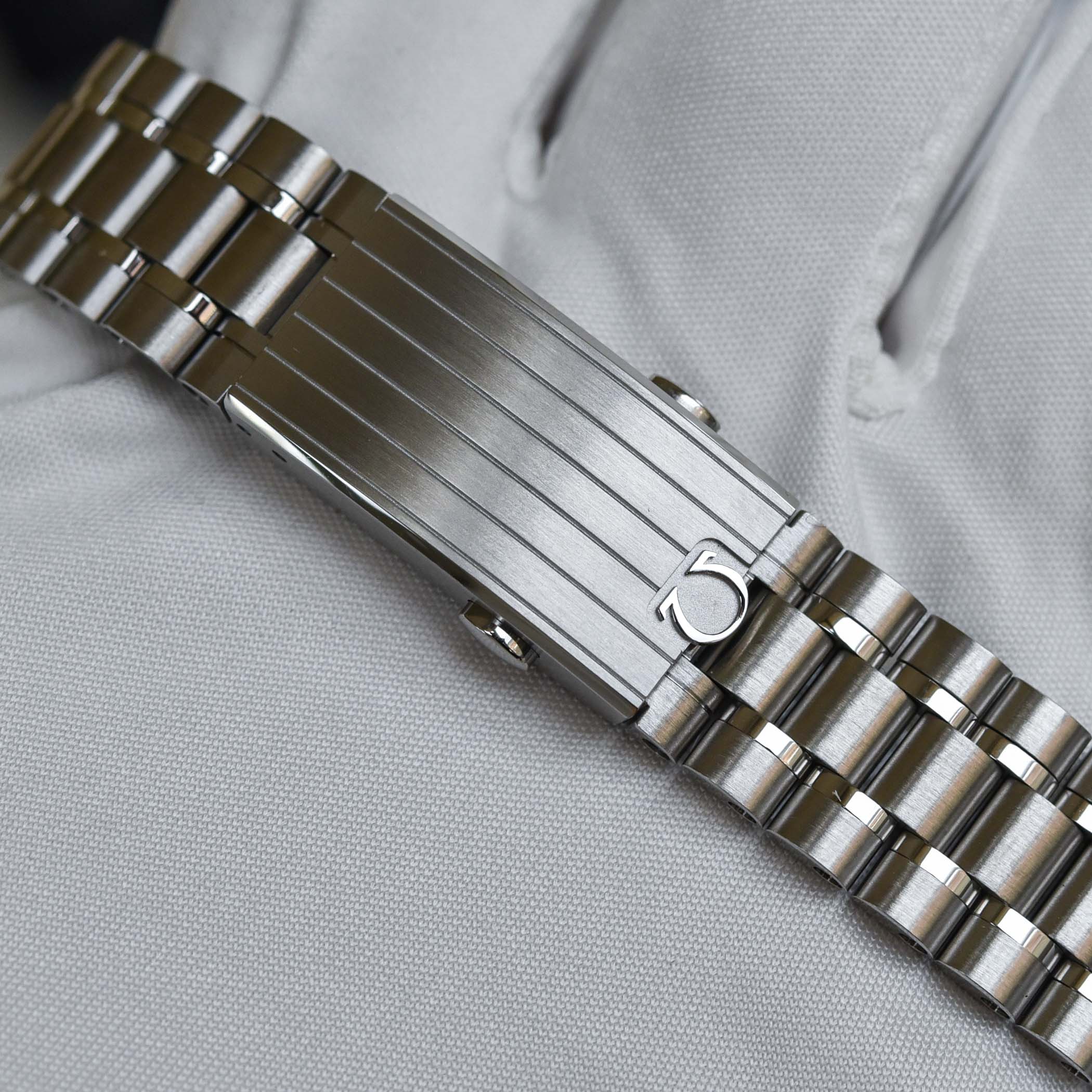
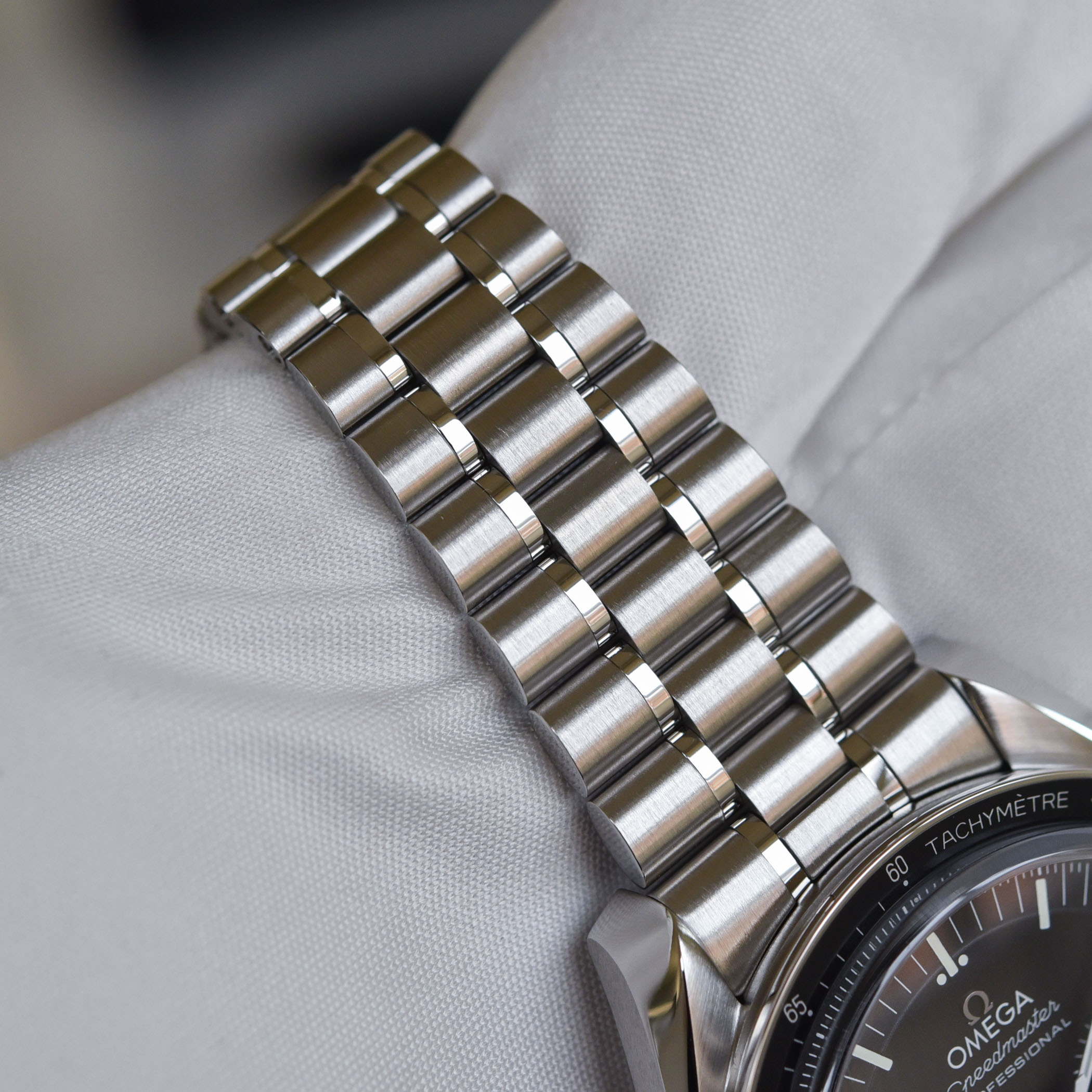
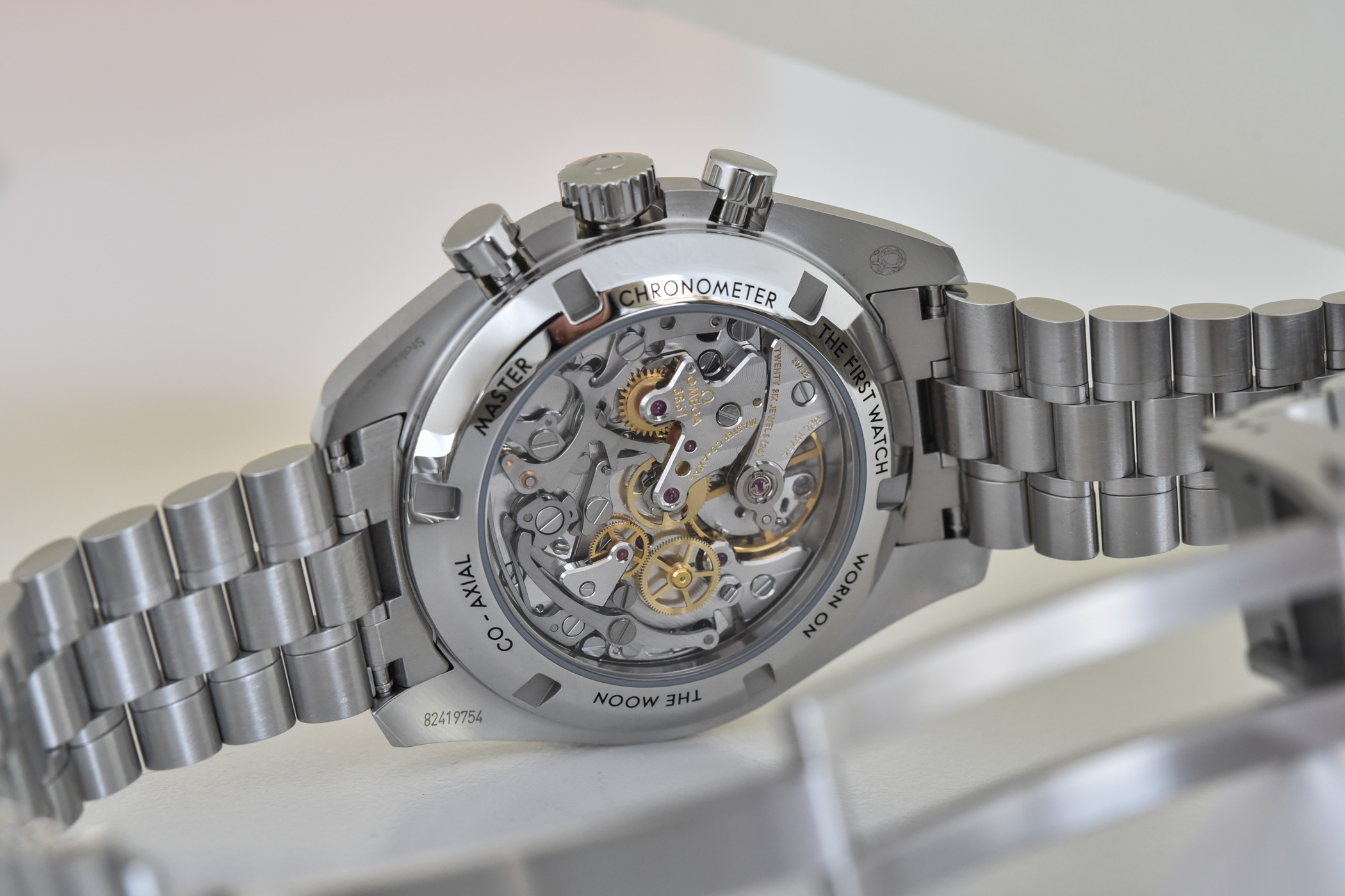
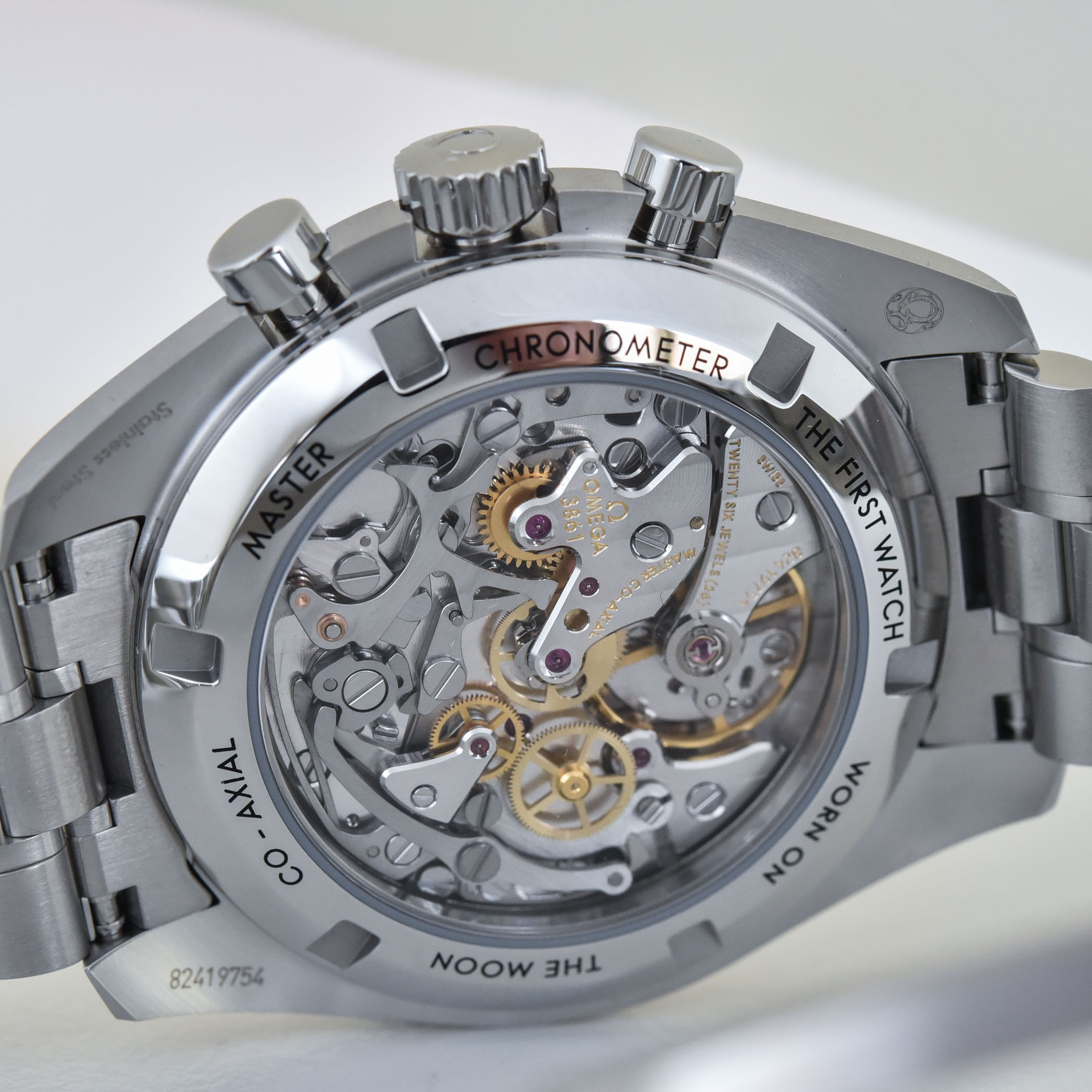
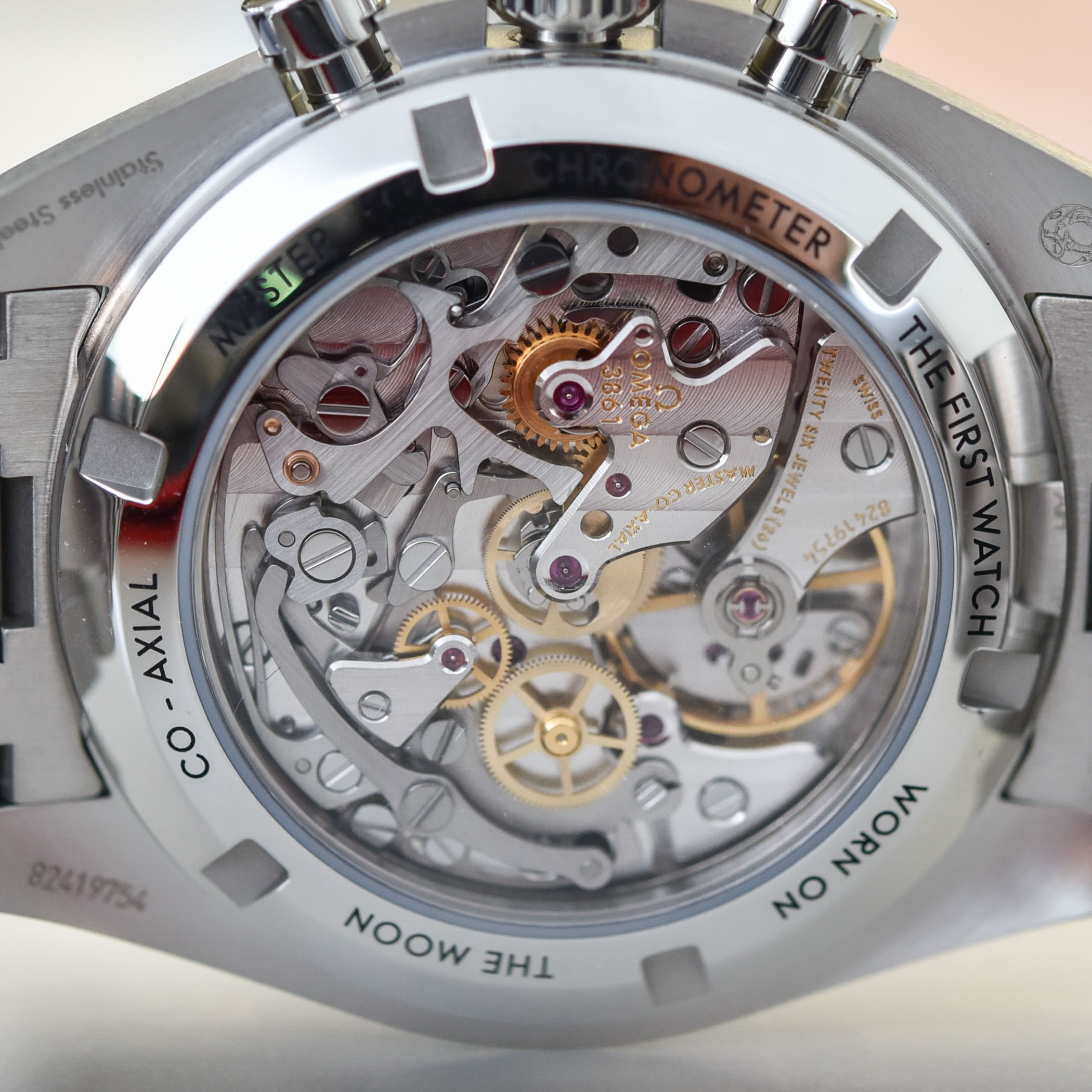
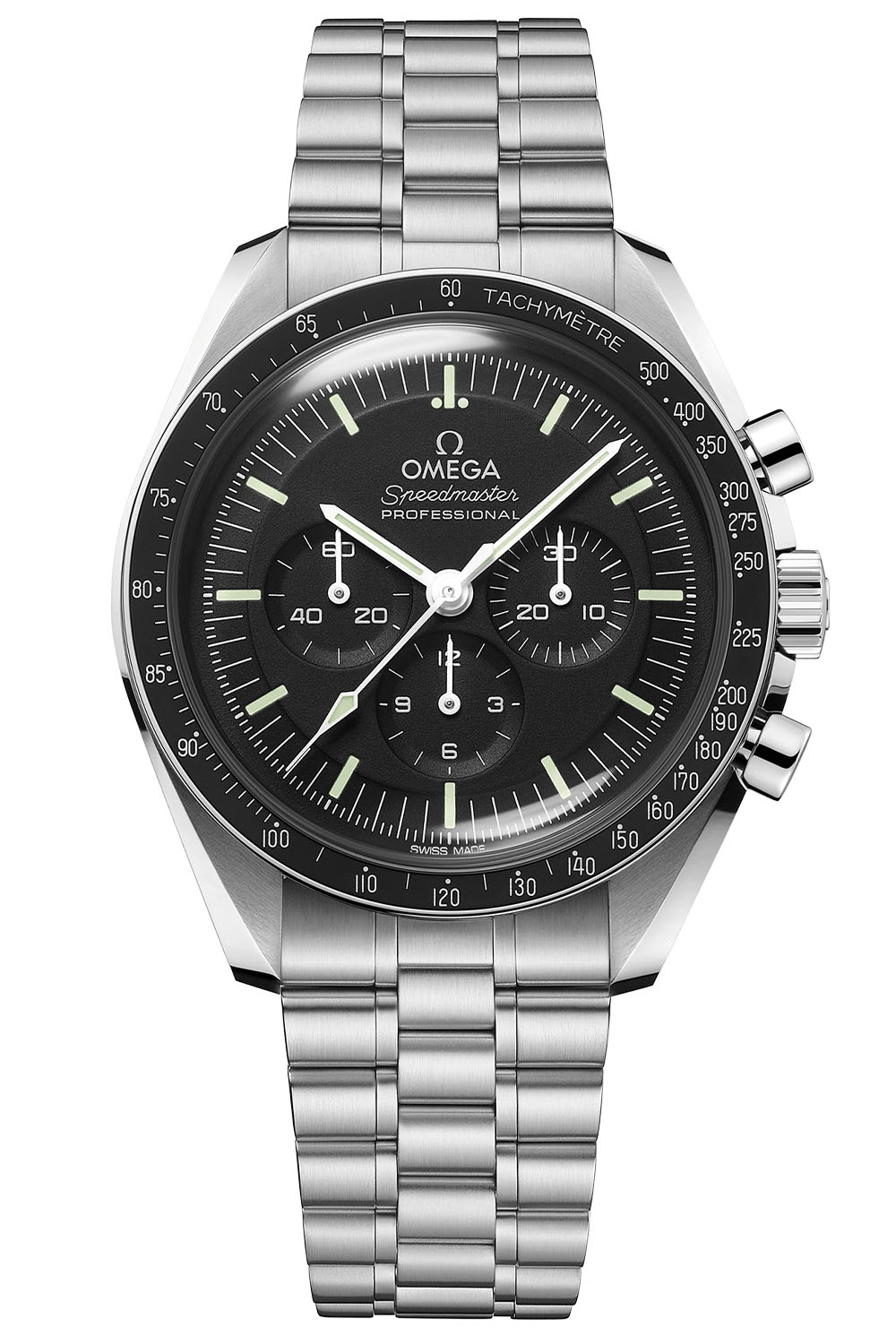
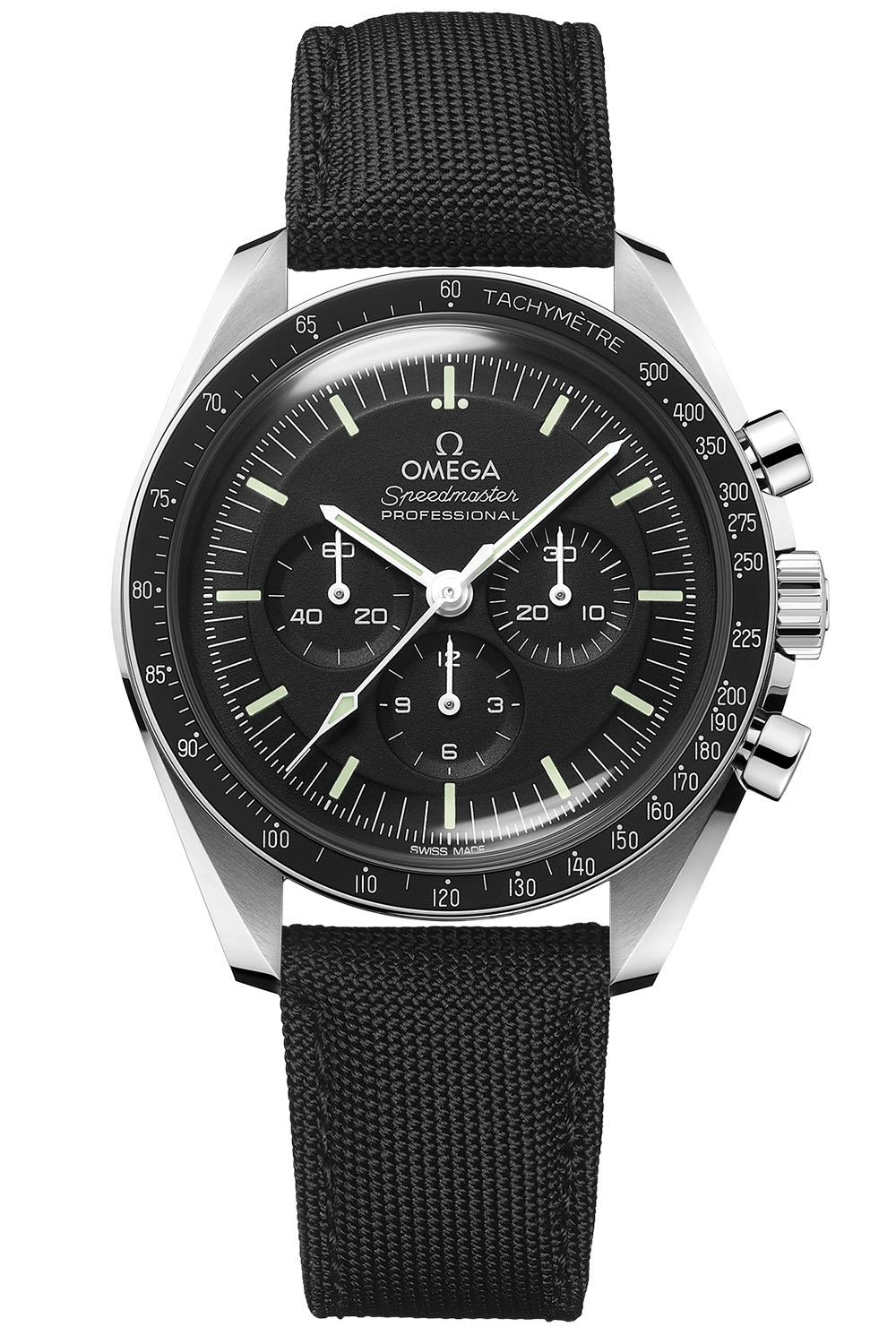

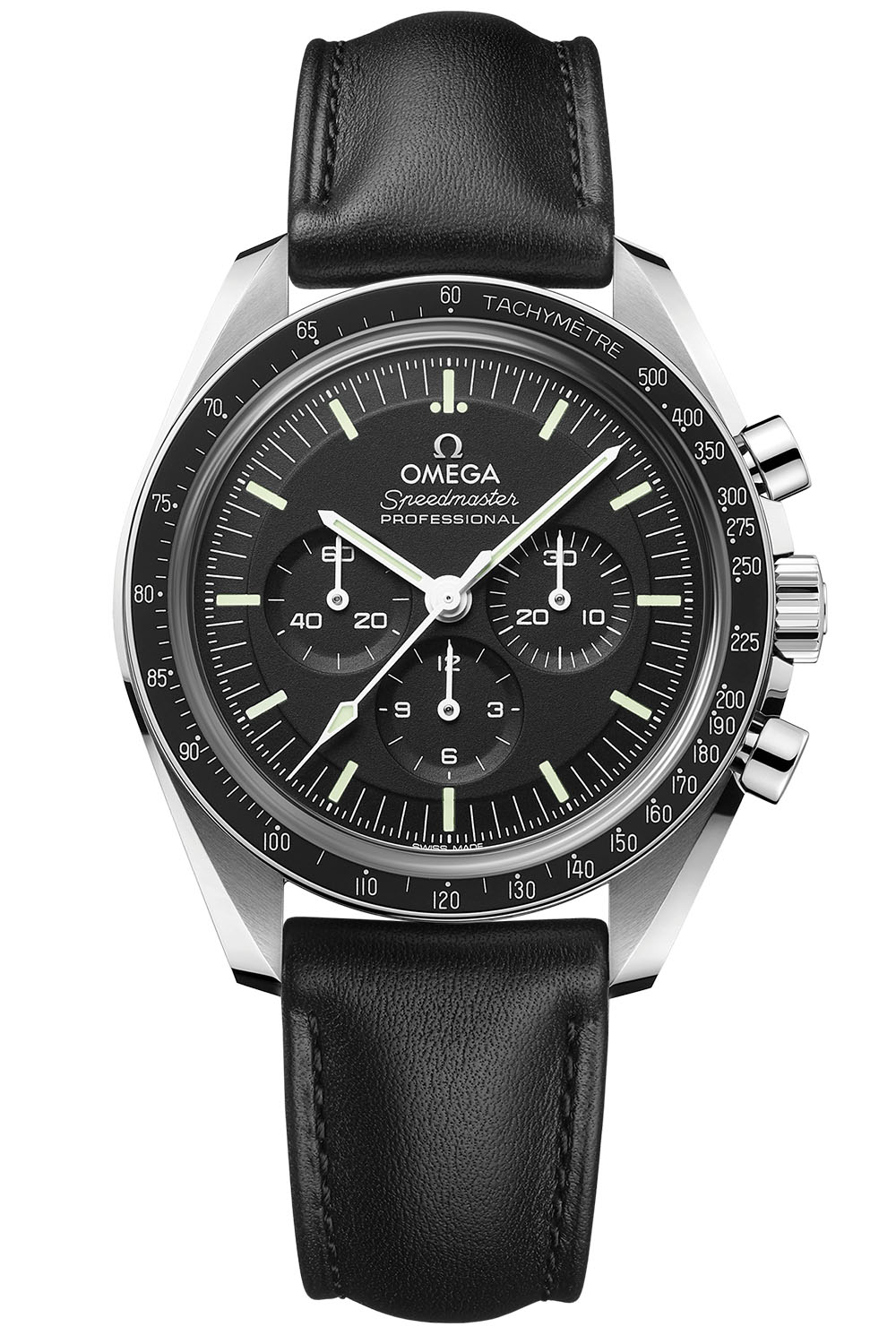
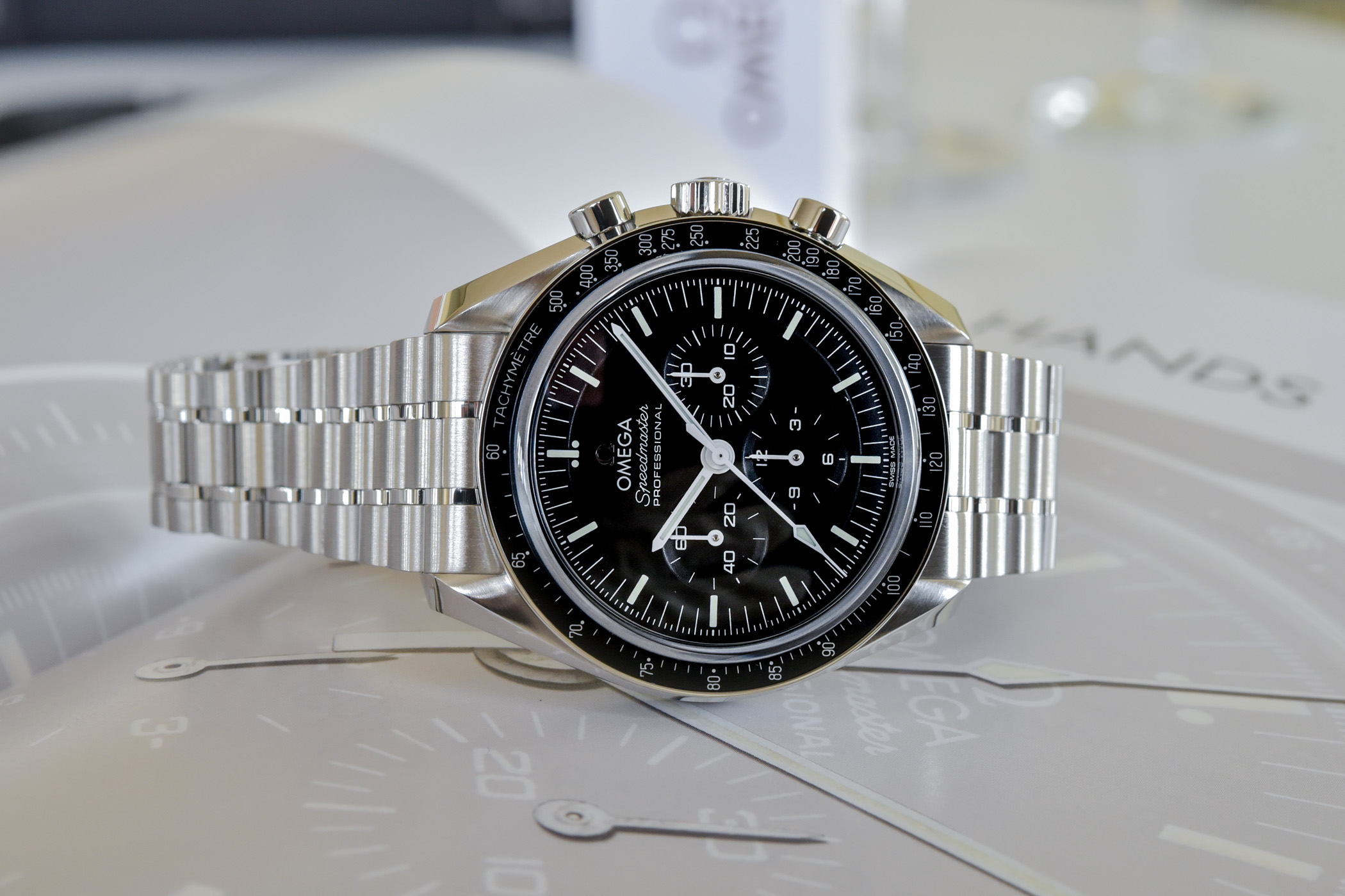
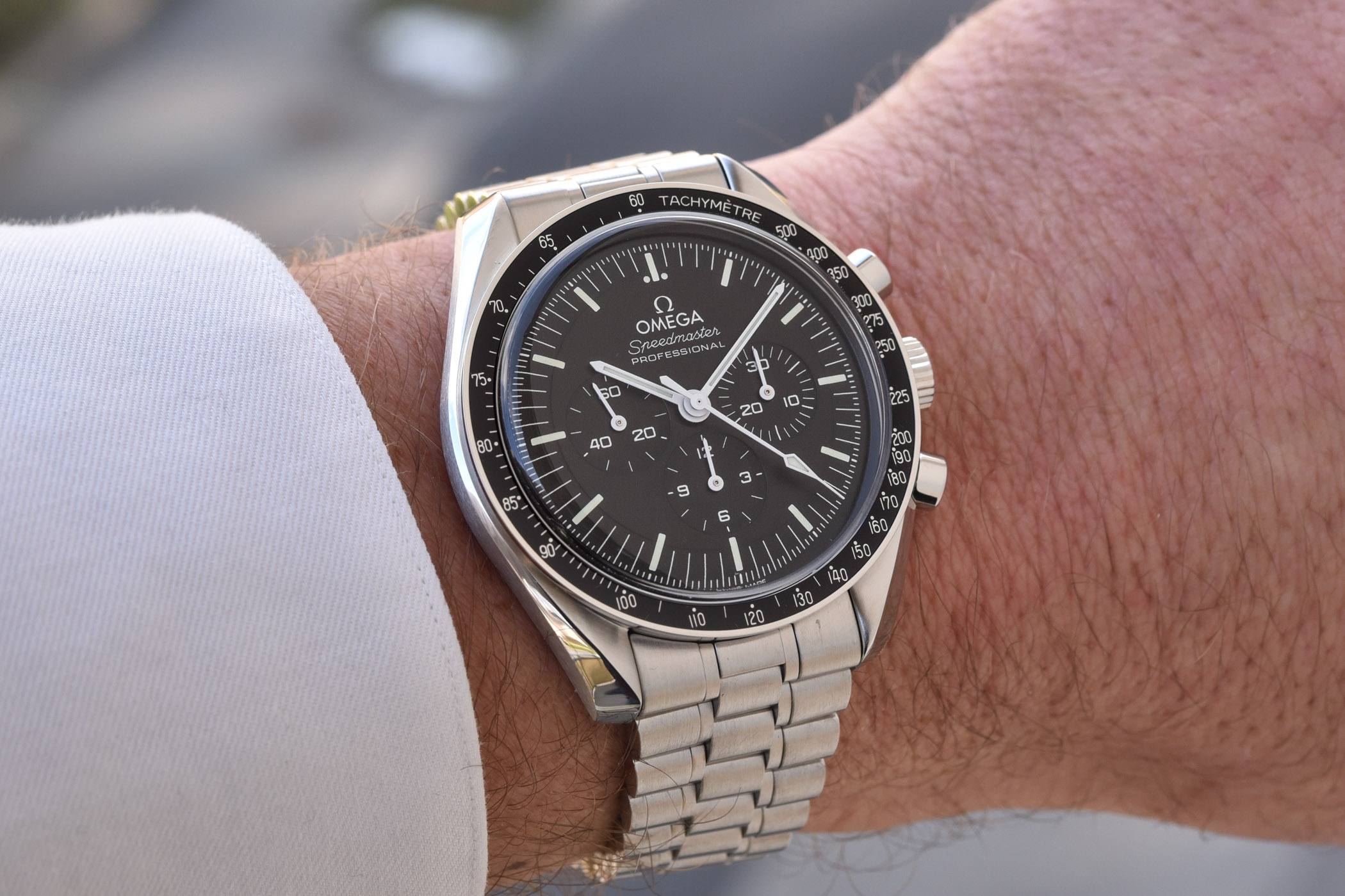



22 responses
Brice, thank you very much for this excellent in-depth analysis of the updated Speedmaster! Great job … 😉
There is a lot to like on this new issue and I am among those who have been waiting for this update for a very long time … finally one can have a Speedy with 21st century watchmaking technology. I guess the only missed opportunity is the clasp which indeed should have a push-bottom operated micro adjustment, as most Seamasters have. I am sure some people will complain about the price increase, which is not insignificant, but at least you are also getting ‘more’ watch for your money.
And for those who want a new Speedy that’s closer to the original, there is still ref. 311.30.40.30.01.001 with the re-issued 321 movement …
Most comprehensive article on this subject.
Thank you and well done.
Thank you, one of the most concise review of the updates!
Great article, covered most of my questions! The big surprise is the thickness with front and bqck sapphire, considering other omega chronos are notoriously thick which is why I never got one (well that and the fact that it’s almost impossible to read minutes on the tiny hour/minute dial). Looking forward to checking the new models when they hit the boutiques.
A most comprehensive horological read for an extraordinary timepiece! However…
Omega (like, “The Crown”) still doesn’t get it right. With all these newfangled refinements, why, do they still not fabricate the watch and the band in TITANIUM? At least for the watch aficionados who spring for the improved models (like the one that doesn’t have the cheap plastic crystal-which was originally chosen for its hazard factor)?
I’ll bet that if Omega had a ti Speedy in the 60’s, NASA would have preferred it over the stainless casing due to weight savings alone (especially considering the costs associated with propelling it to the moon)!
One little detail that you missed was that the centres of the small hands on the sub-dials are no longer painted white.
@Miika – true! Haven’t seen that
Great review Brice.
I have picked mine up from Omaga UK today and it is simply a stunner. While it is cliche to say that, the pictures (while stunning already) do not do it justice. It feels amazing on the wrist. I got the sapphire sandwich with steel bracelet. The mid shiny links are actually very nice and subtle (i had reservations before picking it up).
I already have the 1861 hesalite model (on leather) so the new sapphire sandwich is perfect. The stepped dial is also amazing.
I think Omega will see a few people cancelling their orders for the new 321 as you get a lot of watch with the new speedy pro for half the price.
Amazing job Omega. Really starting to punch above Rolex IMO.
I might watch Apollo 13 tonight (for the 23rd time i think).
Congrats on getting one so fast! Agree that the sapphire model is great! Enjoy watching the movie 😉
Just to add on to that… the box is actually pretty cool. you don’t get the goodies like the previous box but you can take out the inner part and turn it into a much smaller watch holder / box. Not sure if i make sense but you basically take out the smaller square inside and leave on your shelf/desk to put the watch in when you don’t wear and protect it or show it.
Smart move Omega !
Nice write up !
What about the color of the lame. Previous was greenish but now more creamy ?
Difficult to see any change or is eyes ?
Your feedback is appreciated
A really great article, thank you. Do you know if this new bracelet fits the old model?
@Max – good (and legitimate) question… We don’t have the answer, unfortunately.
@Max – we do have the answer (as some early owners of the new model already tried this and posted it on Instagram). The new bracelet fits the older generation Speedmaster (1996-2020) however the fit isn’t as perfect as on the new one and there’s apparently a very small gap between the end-link and the case (very minimal). Hope this helps
@Brice Recently bought the previous gen with hesalite and steel. My subdials don’t have the concentric circles but they exist in both your examples above?
I must say, the grammar and writing style in this article has a lot left to be desired. Hard to read.
Do you know if the new bracelet would fit on the snoopy 50th edition?
@mike – it should yes since it seems that the new Moonwatch and the Snoopy share the same case
Great review and very comprehensive. I notice you mention the grainy texture of the pre-2021 Speedmaster, and the concentric rings engraved into the sub-dials. My 2011 3570.50 has this dial but the stock dial is very flat in comparison and has a smooth finish on the sub-dials, so I wonder what year your speedster is with those great dial shots?
Great review and the comparison really gives a good baseline to evaluate the changes.
Regarding the watch, my only wish would be higher power reserve, preferably 70hrs+.
I have been a Rolex admirer all my life and lucky to own a stick dial GMT. Just bought a new 2021 Speedmaster. Totally blown away by the quality, accuracy and finish. Love my Rolex, but…!
All the upgrades to the movement and refinements to the case dimensions and bracelet are fantastic .
My only gripe is the choice of the same box crystal for the sapphire sandwich model.
Omega !
Make the Sapphire glass match the soft curvature of the Hesalite crystal !
The box crystal is more practical in terms of scratch resistance but it detracts from the classic speedy looks.